Ever wondered what it’s like to take an EV across multiple countries?
I’m breaking down my six-country, 3,500 km+ European road trip to help others plan their own adventure and show how easy, affordable, and fun renting an EV in Europe can be.
Whether you’re considering an electric car for your next road trip or just curious about how charging works across different countries, this guide will give you a firsthand look at my experience, challenges, and surprises.
NOTE: This post is a high level overview of my European EV road trip. For details on each individual leg please check out the following posts:
- French Riviera EV Road Trip Report
- Northern Italy EV Road Trip Report
- Swiss Alps EV Road Trip Report
- Northern Spain EV Road Trip Report
- Andorra EV Road Trip Report
Charging in Europe vs. North America
One of the biggest differences between electric car charging in Europe and North America is standardization.
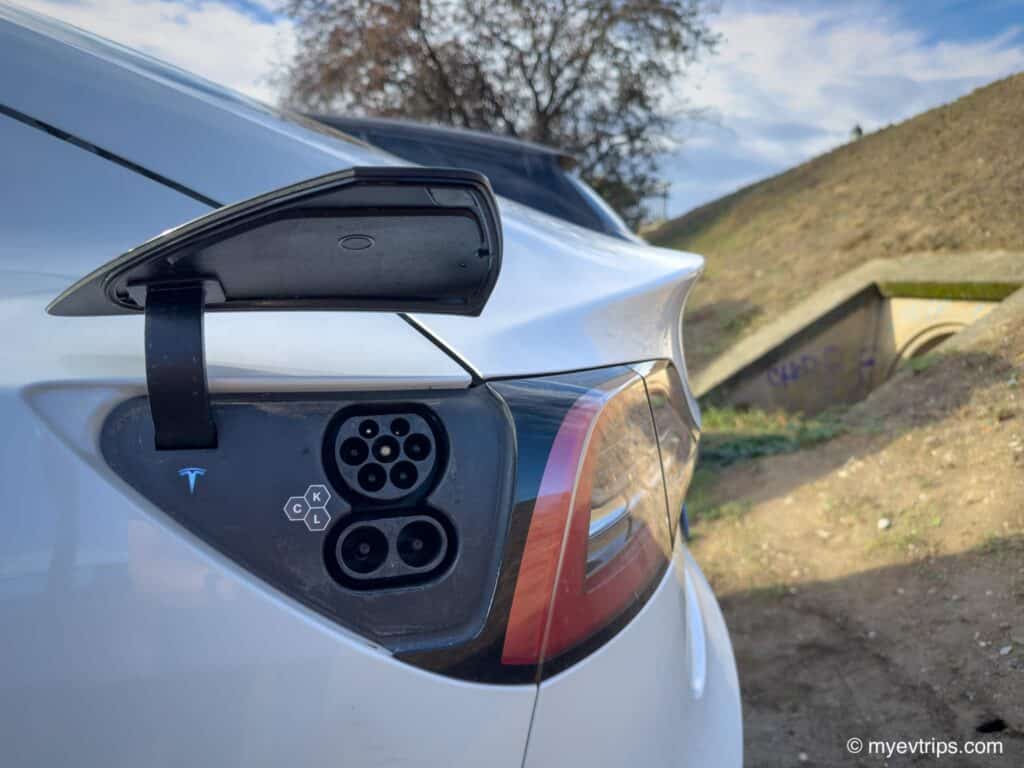

Unlike North America, where different manufacturers use various plug types, most EVs in Europe, including Tesla, use the same CCS charging standard.
This means you can charge at nearly any fast charger without needing an adapter. The convenience of this system is a game changer, allowing for seamless cross-border travel and eliminating range anxiety, as you’re never far from a compatible charger.
Another key difference is that most public L2 chargers in Europe don’t come with an attached cable—you’re expected to bring your own.
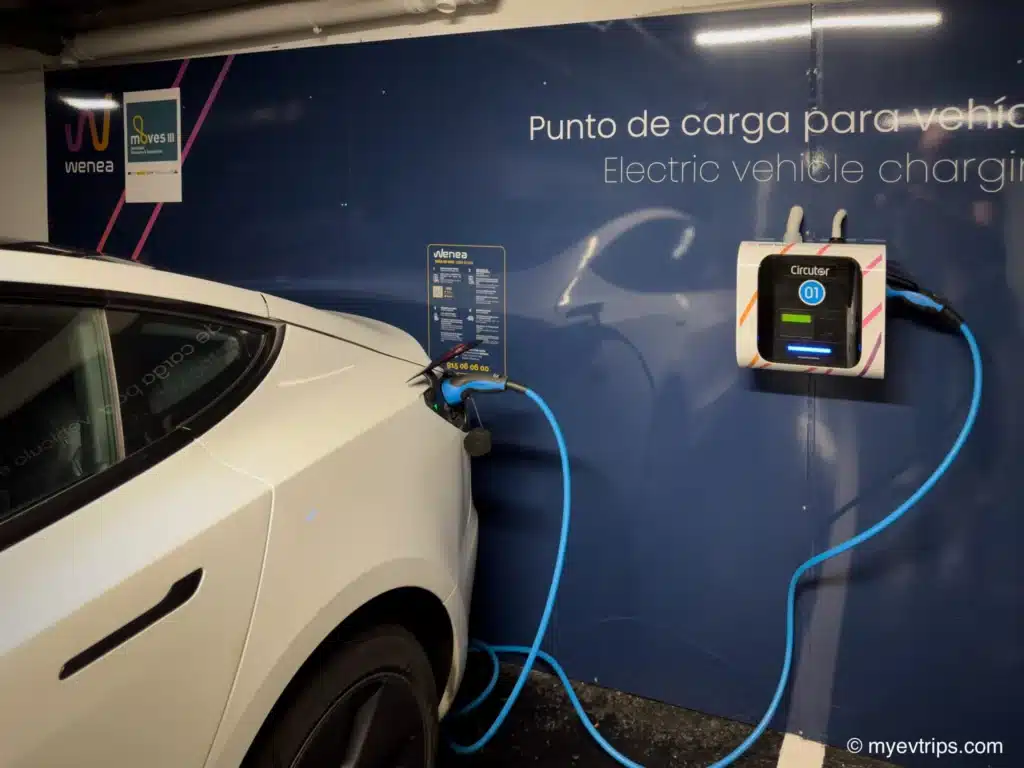
This setup would be extremely beneficial in North America, especially in places like Alberta, where I’ve encountered multiple instances of charging cables being vandalized.
You can read more about my experiences with charging issues in different provinces here.
electric car charging in Europe
During my trip through six countries, I encountered various electric car charging stations in Europe. They include;
- France: Ionity, Tesla Superchargers, Total Energies
- Spain: Endesa X, Iberdrola, Tesla Superchargers
- Monaco: Monaco On-Street Charging
- Italy: Enel X, Tesla Superchargers, Tesla destination charger
- Switzerland: GOFAST, Tesla Superchargers, MOVE
- Andorra: FEDA, Endesa, Tesla destination charger
Additionally, consulting charging maps and apps like Electromaps and Chargemap provide comprehensive maps of charging stations throughout Europe, helping EV drivers locate convenient charging points.
Accommodations with EV Charging
Unlike North America, where hotels with EV chargers are relatively easy to find, it was more difficult to locate accommodations in Europe that offered EV charging.
Even rarer were hotels with free EV charging. My strategy was to book stays where I could charge overnight, but this proved challenging.
I had one stay where I assumed charging was included but found it was more expensive than the local Supercharger and you had to pay a premium for parking. Another hotel in Italy had free parking but their EV charger was broken.
Renting an EV in Europe
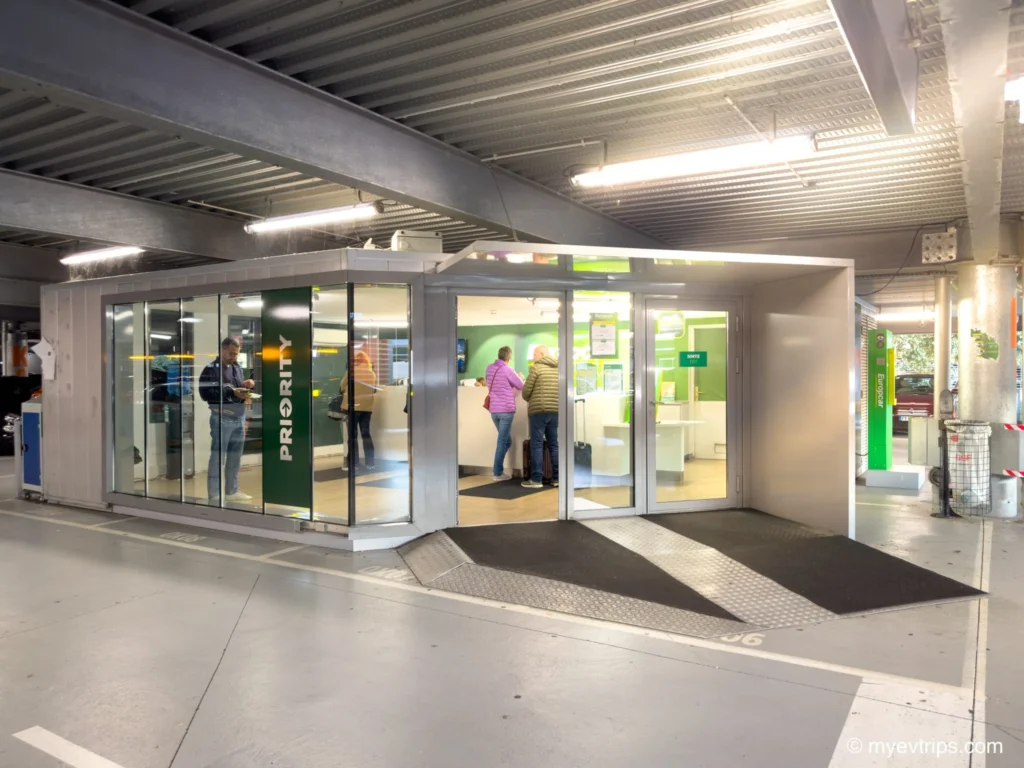
Renting an EV in Europe was a surprisingly smooth process. Many rental companies now offer electric vehicles, including:
- Europcar
- UFODrive
- Sixt
- Hertz
These companies offer a variety of EVs, including models not available (at the time of my visit) in North America, such as the Renault Zoe and Volkswagen ID. Buzz.
I opted for Europcar as they offered the best rates on a Tesla Model 3. My hope was to use my Tesla Supercharging credits, but that turned out to be a bust—I ended up receiving a bill for all my Supercharger sessions. Lesson learned: Always confirm this detail before renting.
I scored a 10-day EV rental for just $385 through Expedia—cheaper than the compact gas car I booked later in Ottawa.
I suggest reading my full Europcar EV rental review for full details and tips from my experience
Going forward, you might be better off renting something other than a Tesla thanks to the issues with Elon Musk. With all the controversies surrounding him lately, I would consider trying a different EV next time.
Daily Road Trip Breakdown
Here’s a breakdown of my 3,500km European EV road trip across six countries.
From navigating different charging networks to discovering scenic routes and unexpected roadblocks, each day brought new experiences.
Leg 1: Toulouse, France → Carcassonne
After arriving in Toulouse via Lufthansa, I picked up my rental EV. The process was smooth, aside from the surprise €60 cross-border fee Europcar charged for taking the car into Spain.
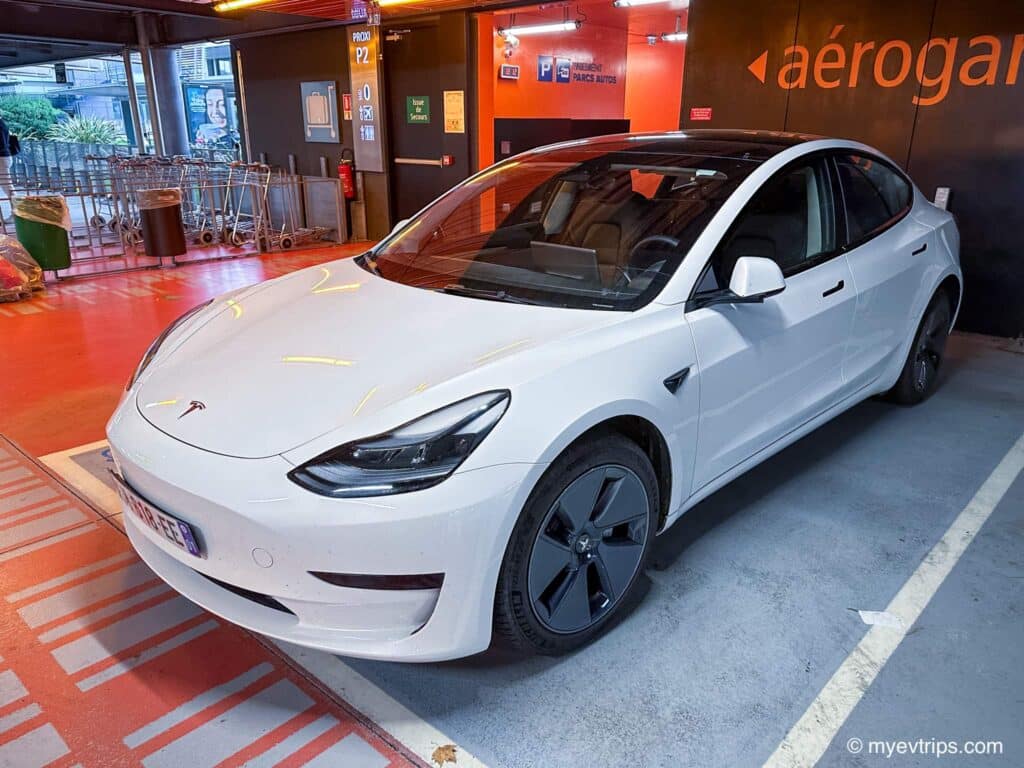
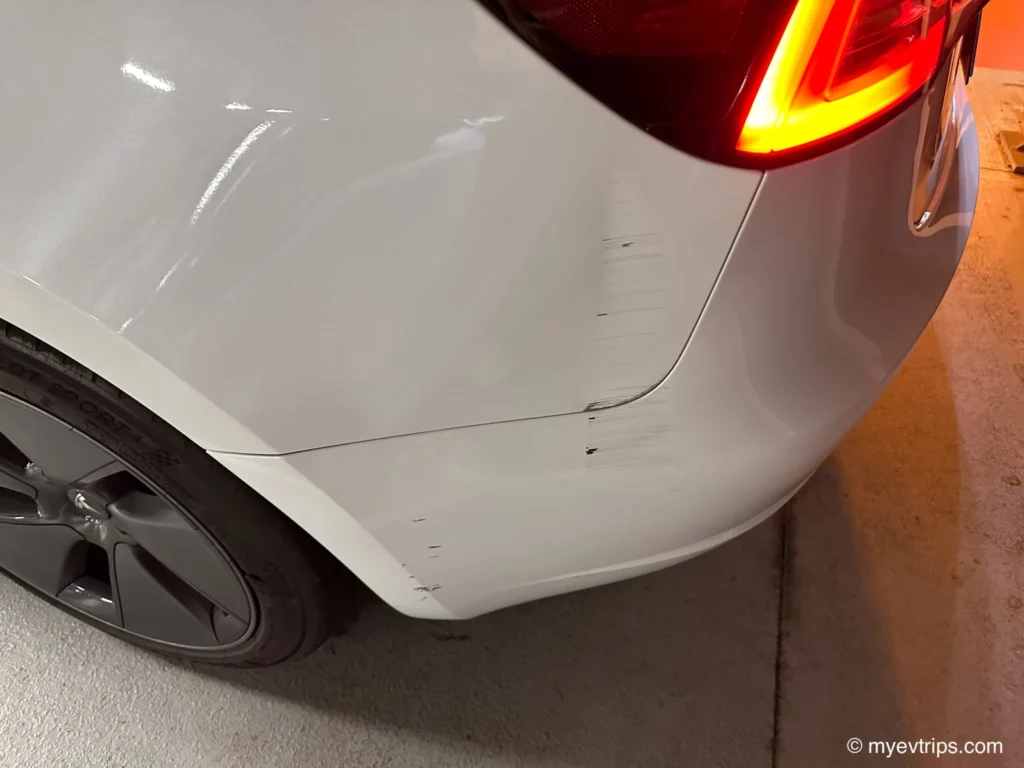
Additionally, the car had significant wear and tear, including plenty of curb rash on the wheels. Damage isn’t uncommon on rentals in Europe but still best to document all issues before departing the lot.
With my rental sorted, I hit the road to Carcassonne, a short drive away. I left the airport with 80% charge.
My first charging attempt in Europe was a disaster—due to jet lag, I struggled with a new charging system, accidentally started a session for another driver, and couldn’t cancel it through the app. I eventually gave up and headed to bed, exhausted.
Leg 2: Carcassonne → The Coast

I woke up early and explored Carcassonne while the car charged in a parking lot. Walking up to the medieval fortress in the quiet morning hours was an experience in itself—the towering stone walls, empty cobbled streets, and misty air made it feel like stepping back in time.
Without the usual crowds, I had the chance to appreciate the intricate details of the fortified city and take in sweeping views from the ramparts.
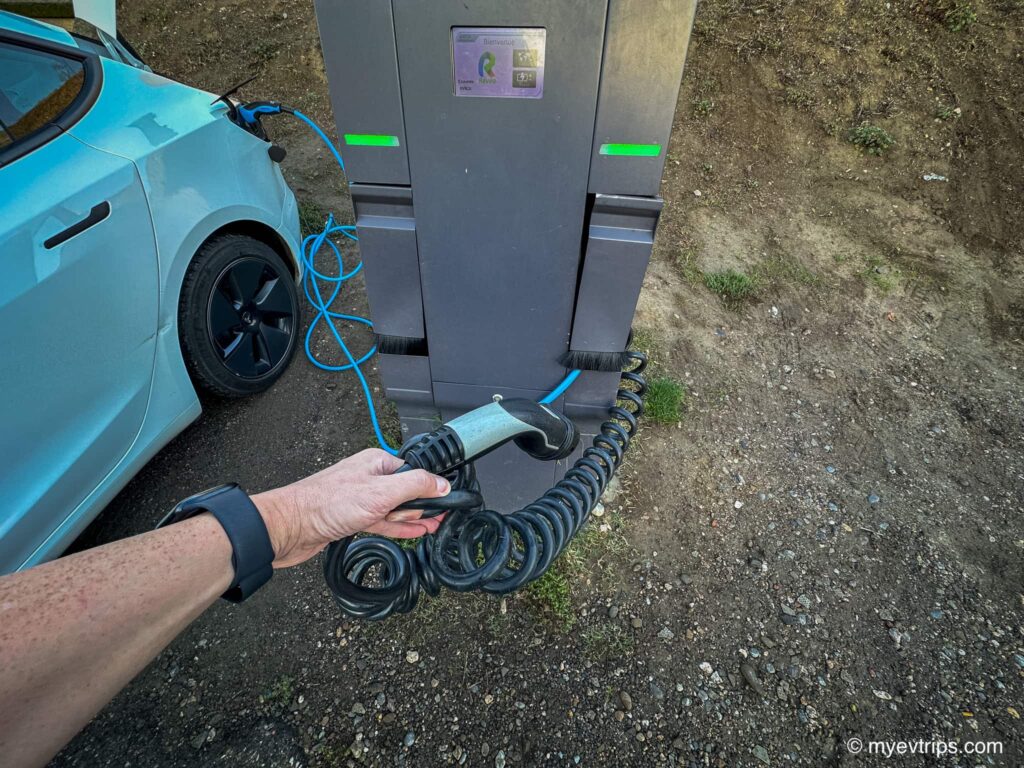
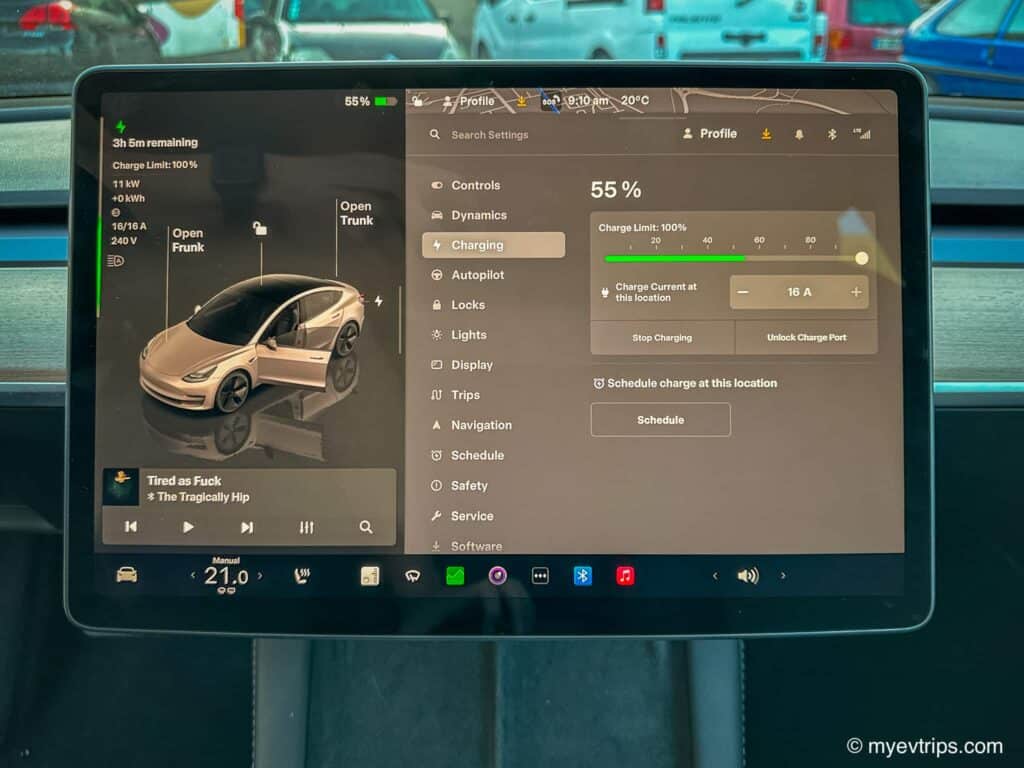
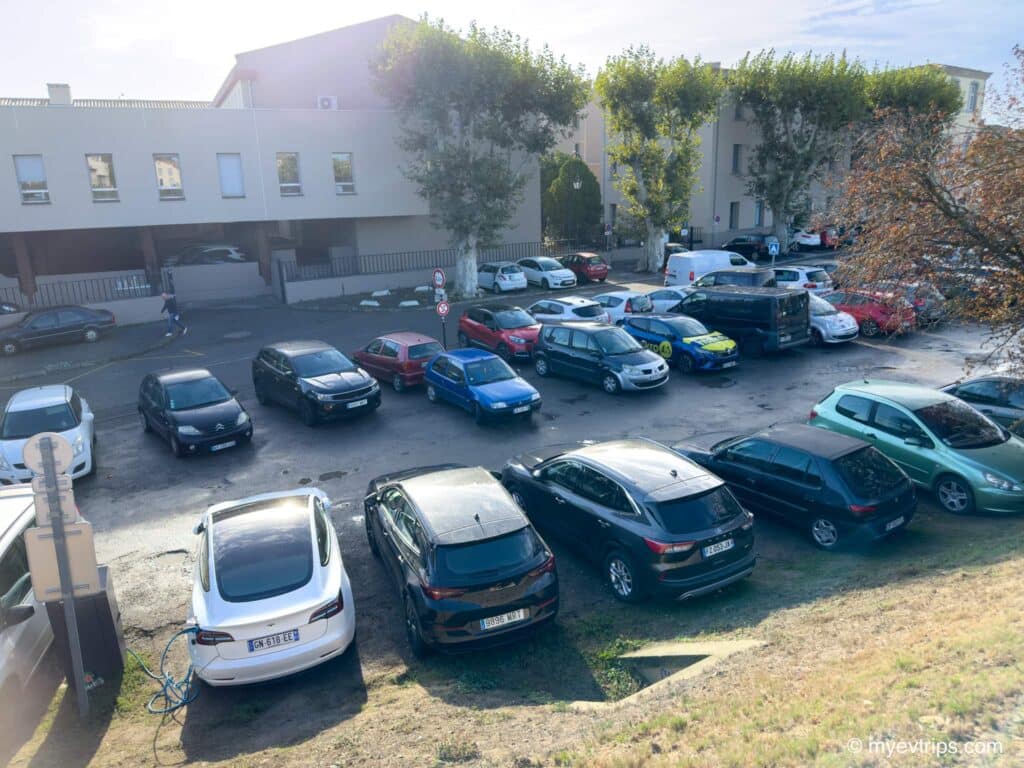
From there, I headed south to Pont du Gard, a stunning Roman aqueduct spanning the Gardon River. Strolling along the trails surrounding the structure offered incredible vantage points to admire its sheer size and engineering.
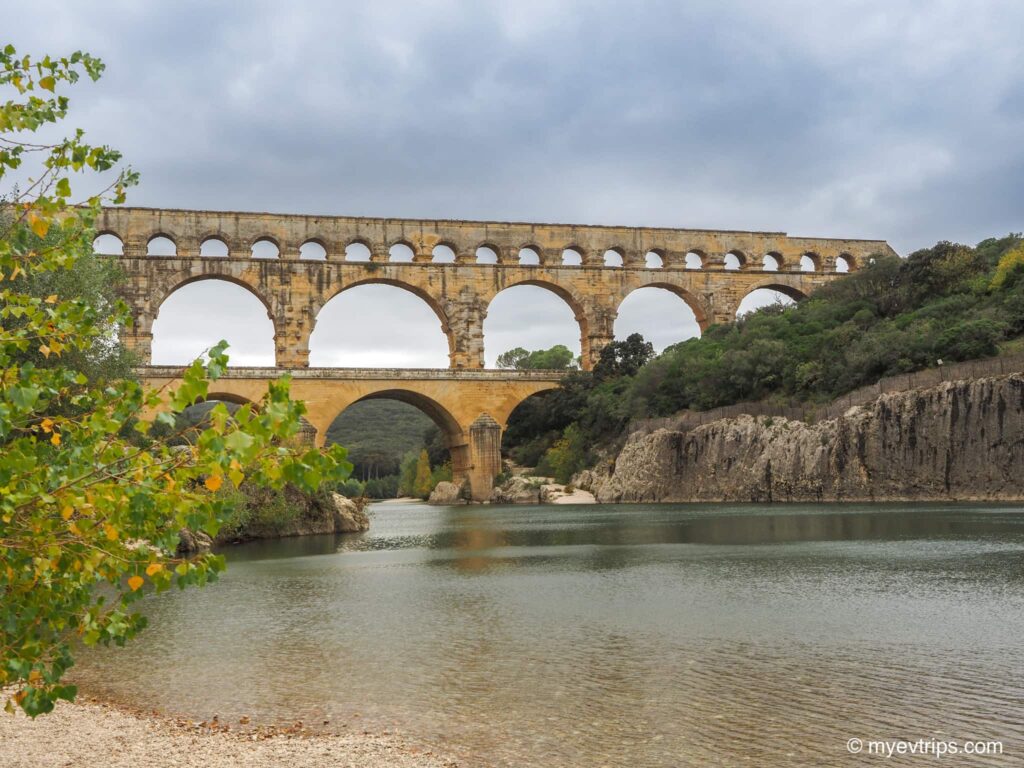
Unfortunately, the charger listed there was missing, which was a frustrating setback, but the detour was still well worth it.
Thankfully, I had more than enough juice to get to the next charge at a Tesla Supercharger in Avignon. This featured new V4 chargers designed for all EVs to use.
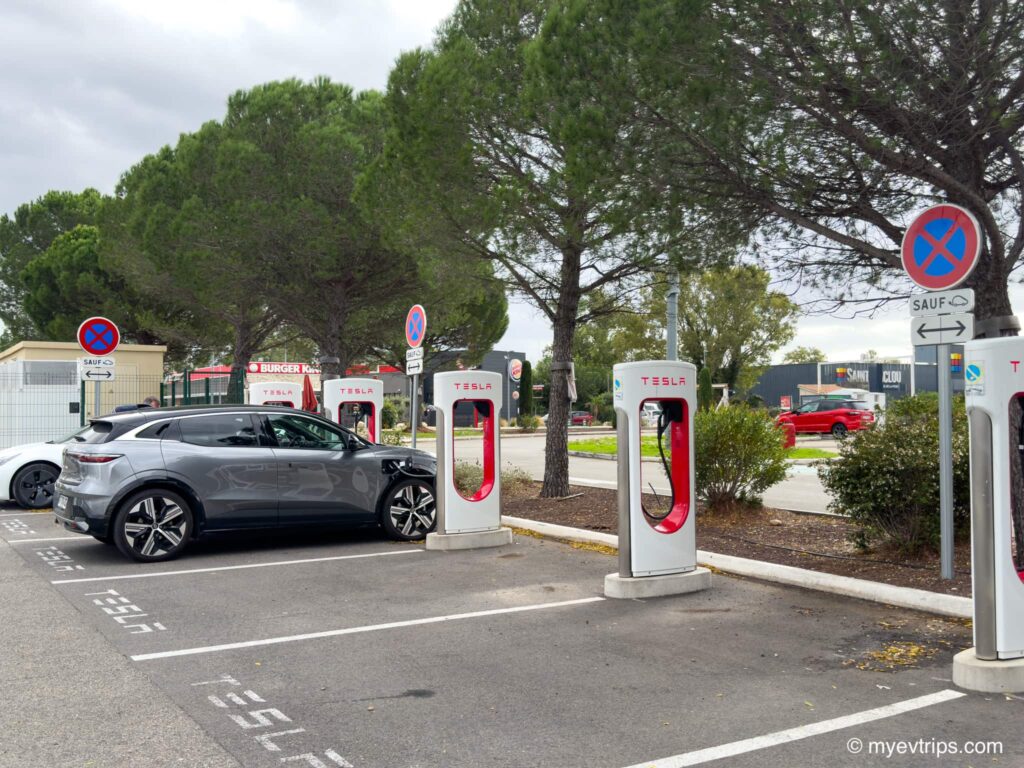
That night, I stayed at a Best Western that advertised EV charging, but it turned out to be an expensive and impractical option. I opted for free street parking instead.
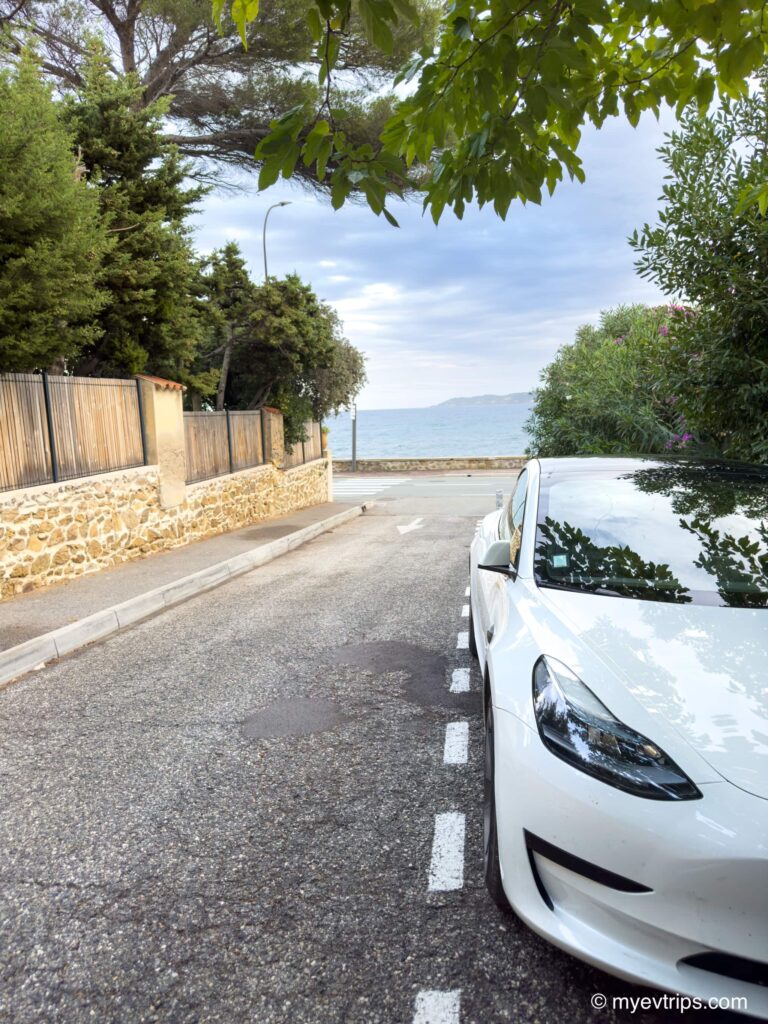
0/2 with departing with a full tank in the AM.
Leg 3: The French Riviera & Monaco
Before reaching the famous Grande Corniche, the coastal drive along the French Riviera was just as mesmerizing.
The road hugged the shoreline, weaving between charming seaside towns and offering endless views of the Mediterranean shimmering under the sun.
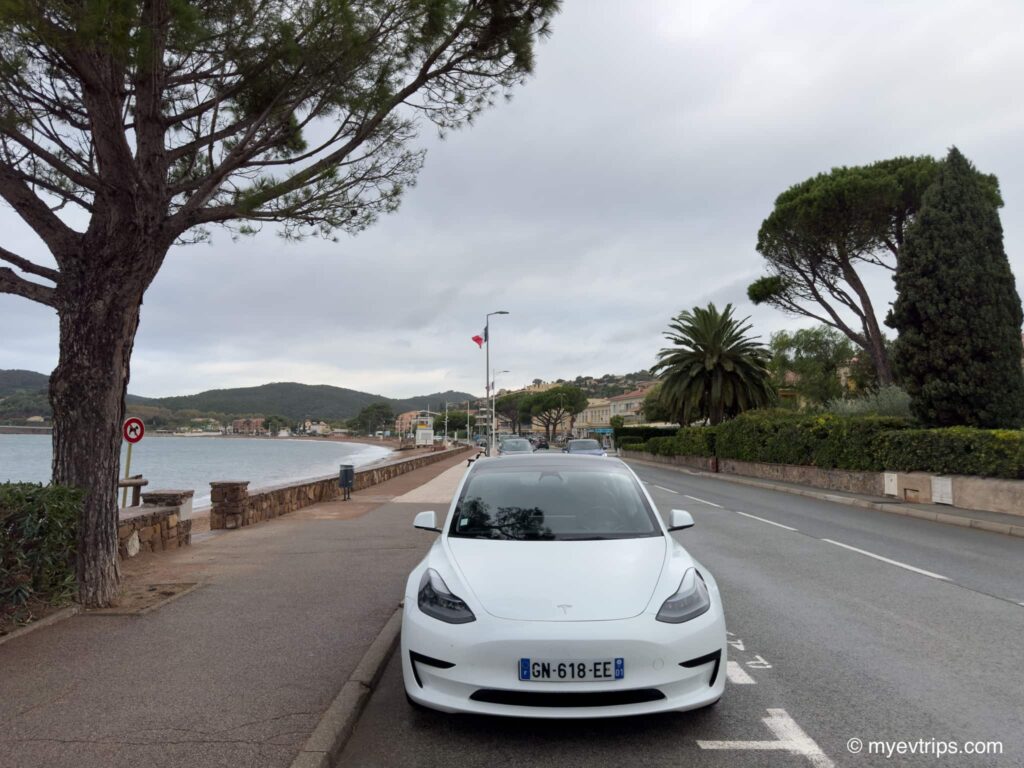
Passing through places like Antibes, Cannes, and Villefranche-sur-Mer, I was treated to a mix of sandy beaches, luxury yachts, and old-world charm.
Along the way, towering red rock formations, almost Martian-like in contrast to the lush greenery and blue sea, began to appear.
These unexpected geological wonders, particularly striking around the Massif de l’Esterel, added a rugged beauty to the journey.
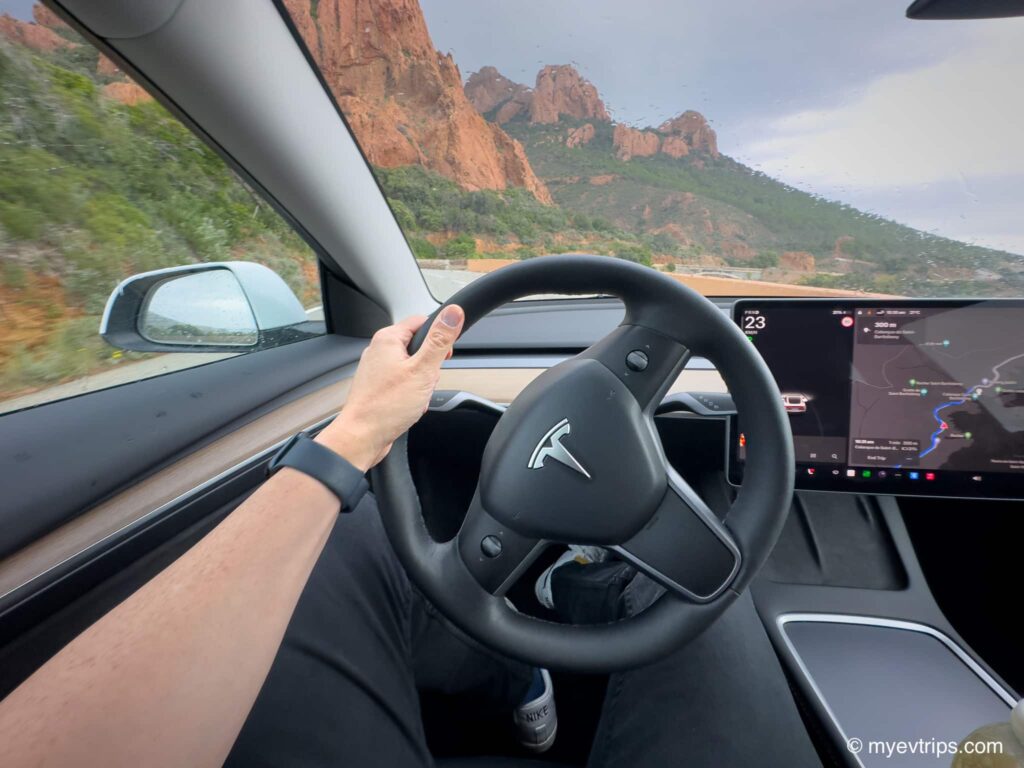
The contrast of colors—fiery red cliffs, deep blue waters, and bright green foliage—was unlike anything I had seen before.
With the sun casting long shadows over the jagged rocks, the scenery felt almost surreal.
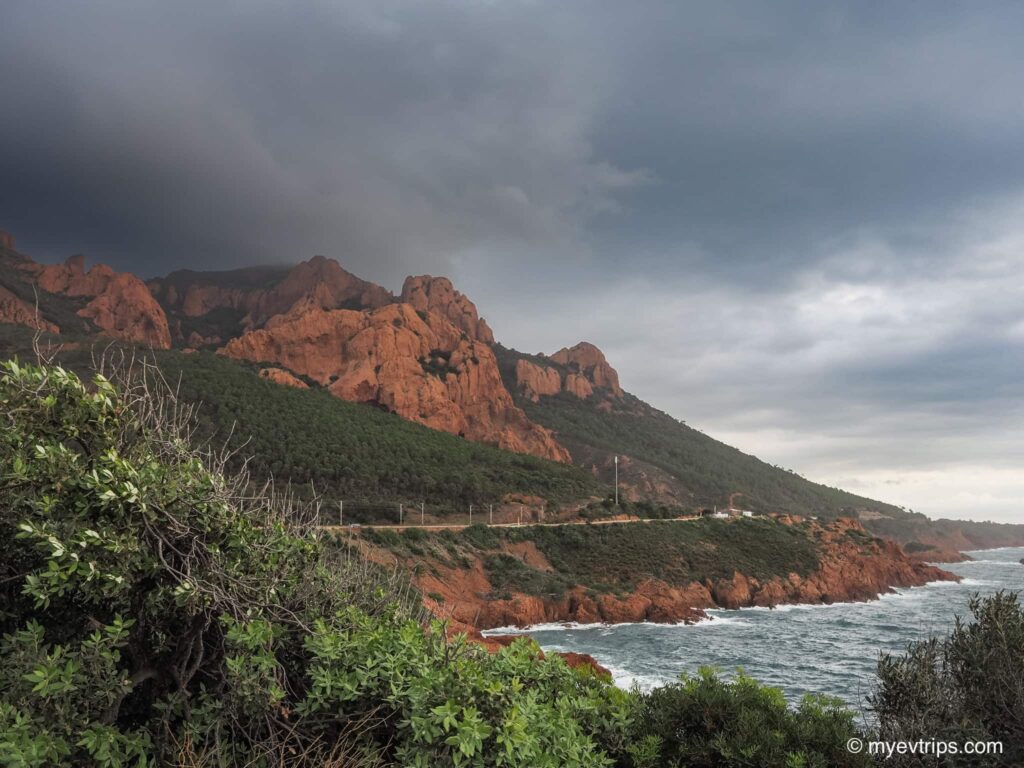
Then came the Grande Corniche, the highest and most breathtaking of the three famous corniche roads.
Built by Napoleon Bonaparte in the early 19th century, this historic route was originally intended as a strategic military road, offering commanding views of the coastline.
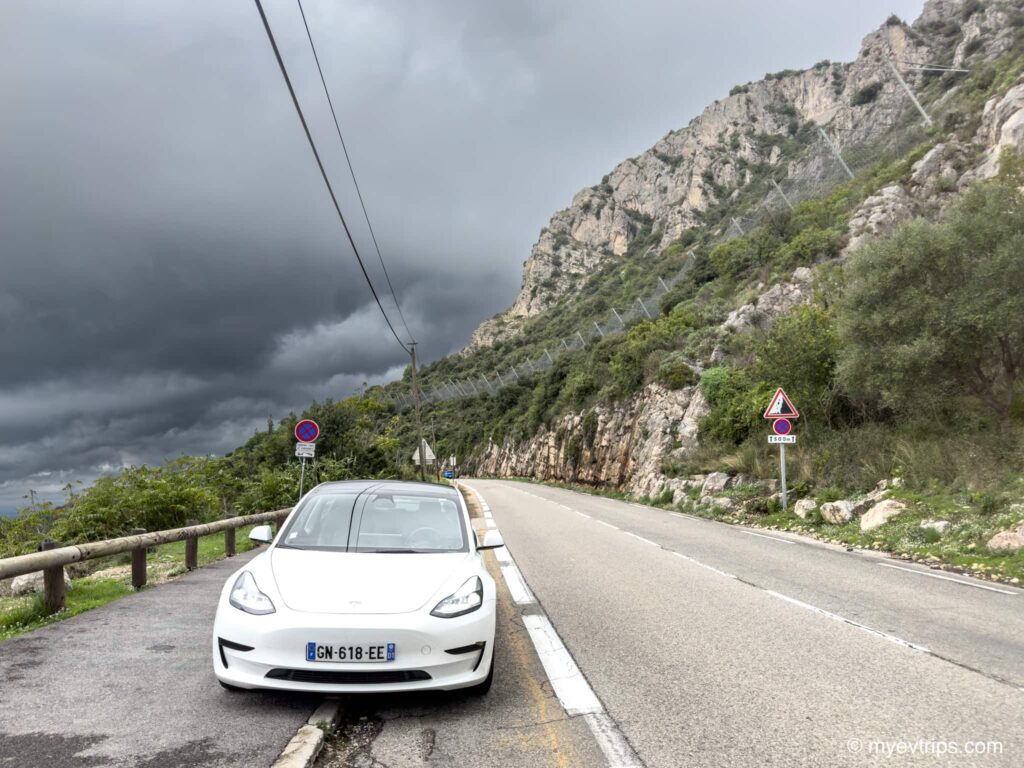

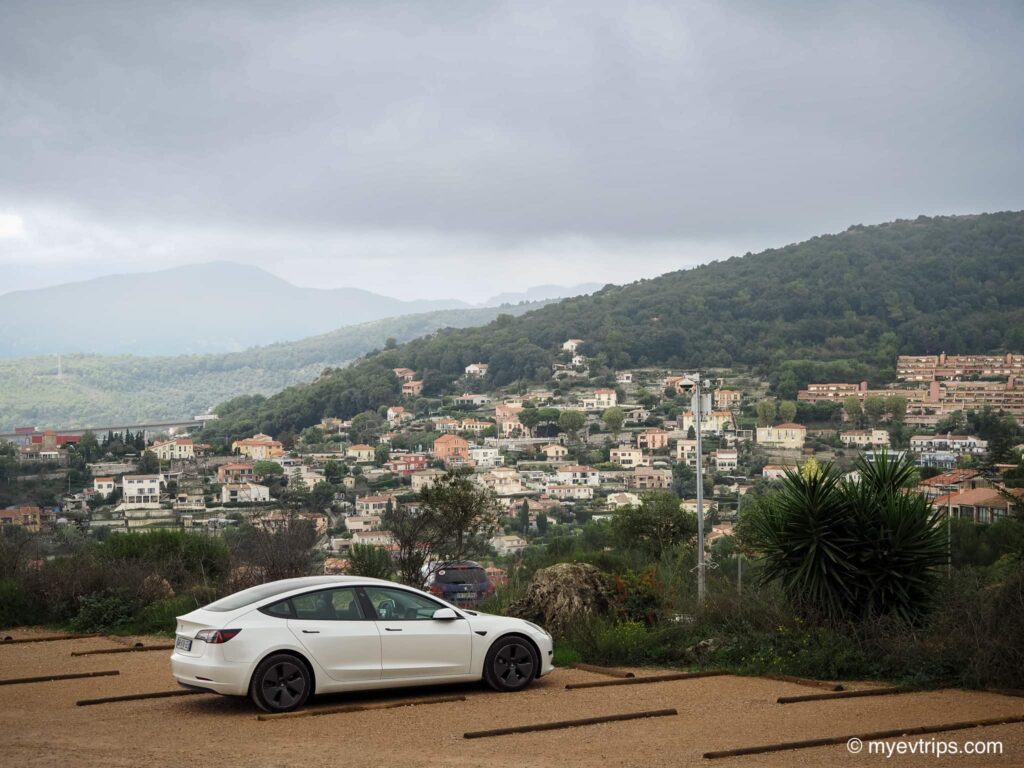
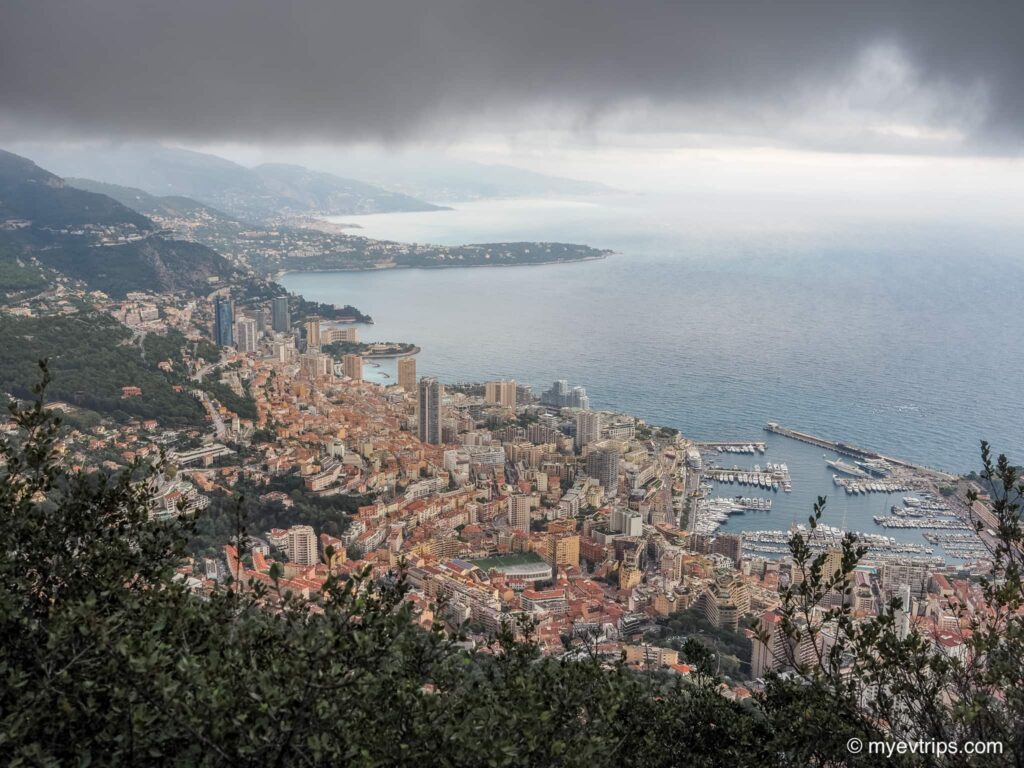
Today, it remains one of the most scenic drives in the world, winding through dramatic cliffs and offering panoramic views of the Mediterranean and the tiny, glamorous country of Monaco below. Driving this ancient road in an electric vehicle felt surreal.
I planned to use the free chargers at Monte Carlo Casino, but upon arrival, the lot was completely full.
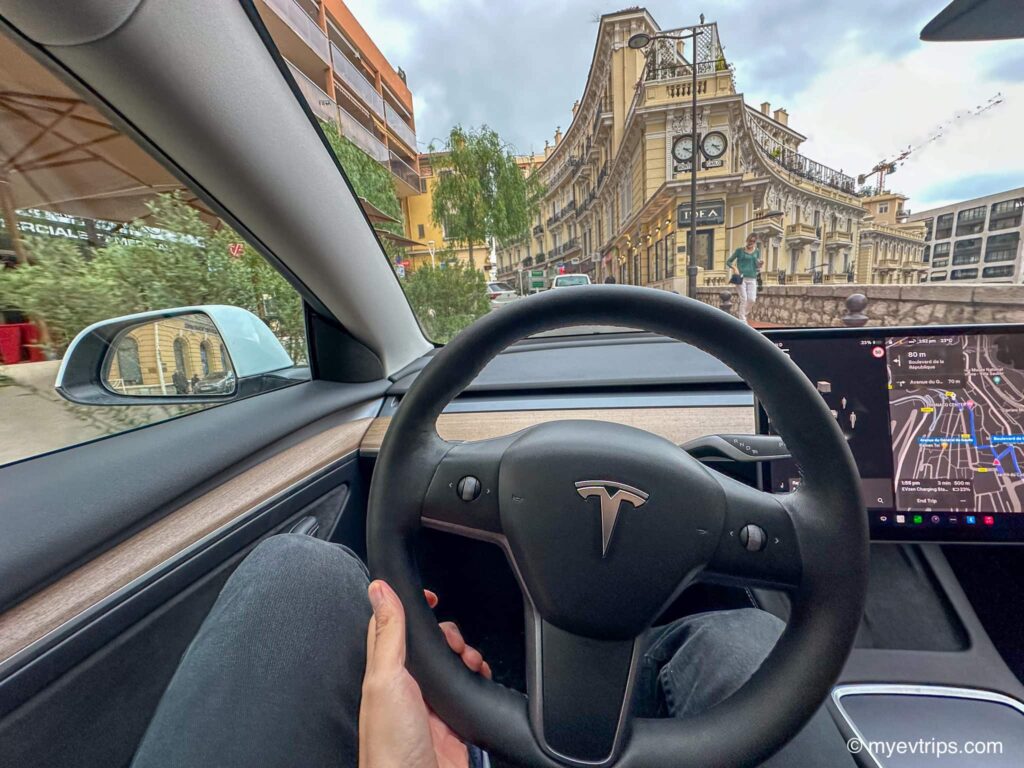
Circling the complex multiple times in hopes of a spot freeing up, I started to feel the familiar twinge of range anxiety creeping in.
With each lap around the luxurious streets of Monaco, I debated whether to wait it out or push forward.
Ultimately, I made the call to continue on, knowing I could charge at the next stop—likely saving myself from leaving a few Euros at the casino in the process 😉
Leg 4: Milan → The Swiss Alps
Crossing the border from Monaco into Italy, I was greeted by picturesque valleys, charming towns, and winding roads.
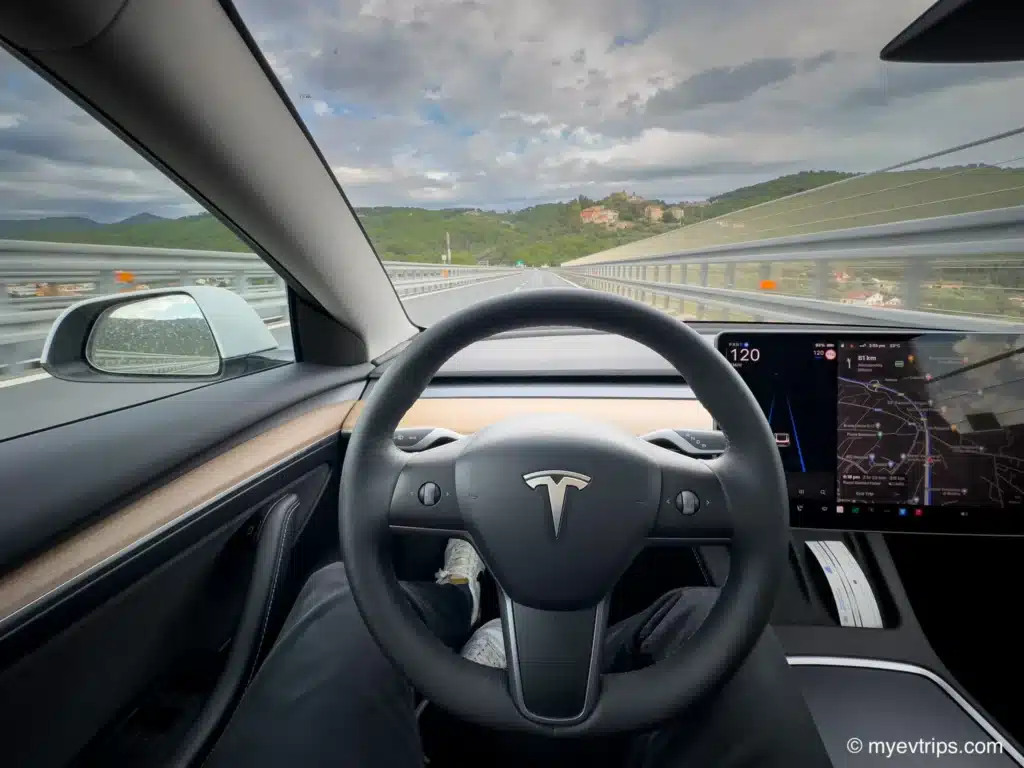
Each towering bridge spanned over seaside villages, leading into tunnels that unveiled similar vistas on the other side.
Charging in italy
After charging at a Supercharger that required a passcode to access their lot (a first for me) I made my way north to Milan.
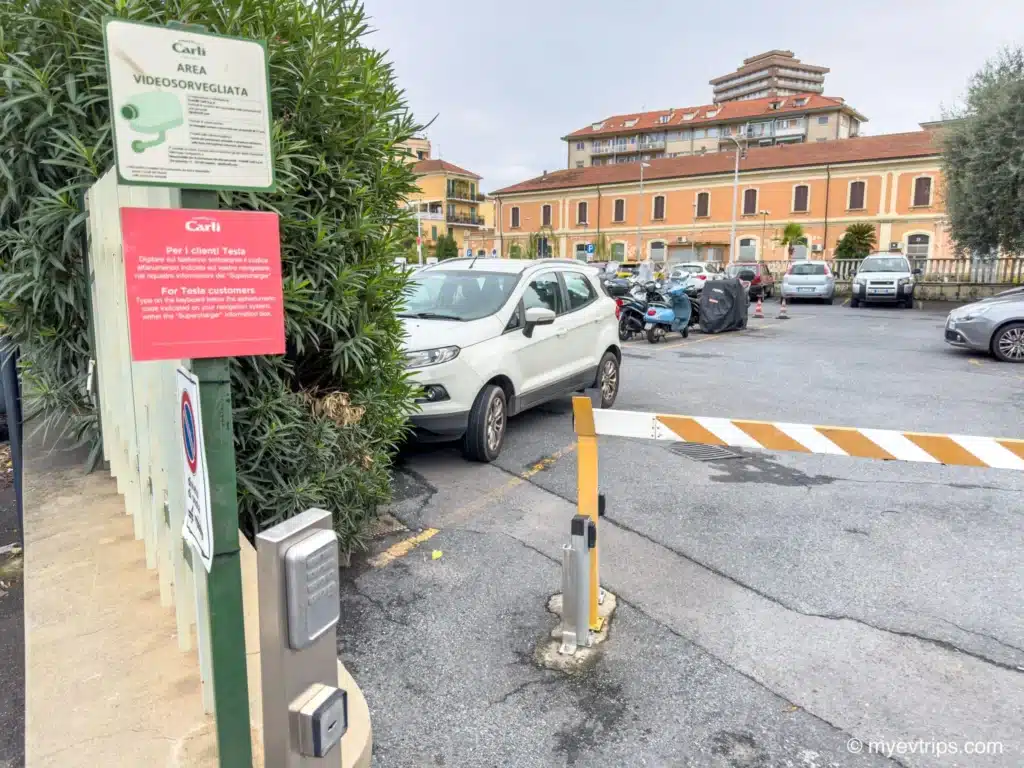
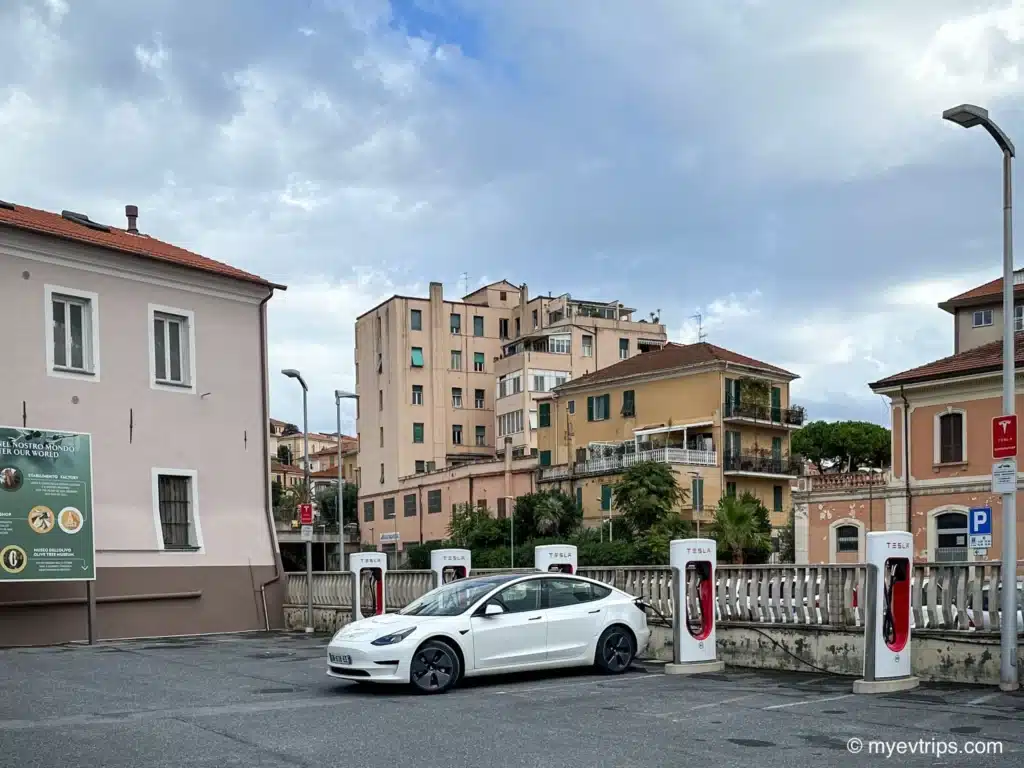
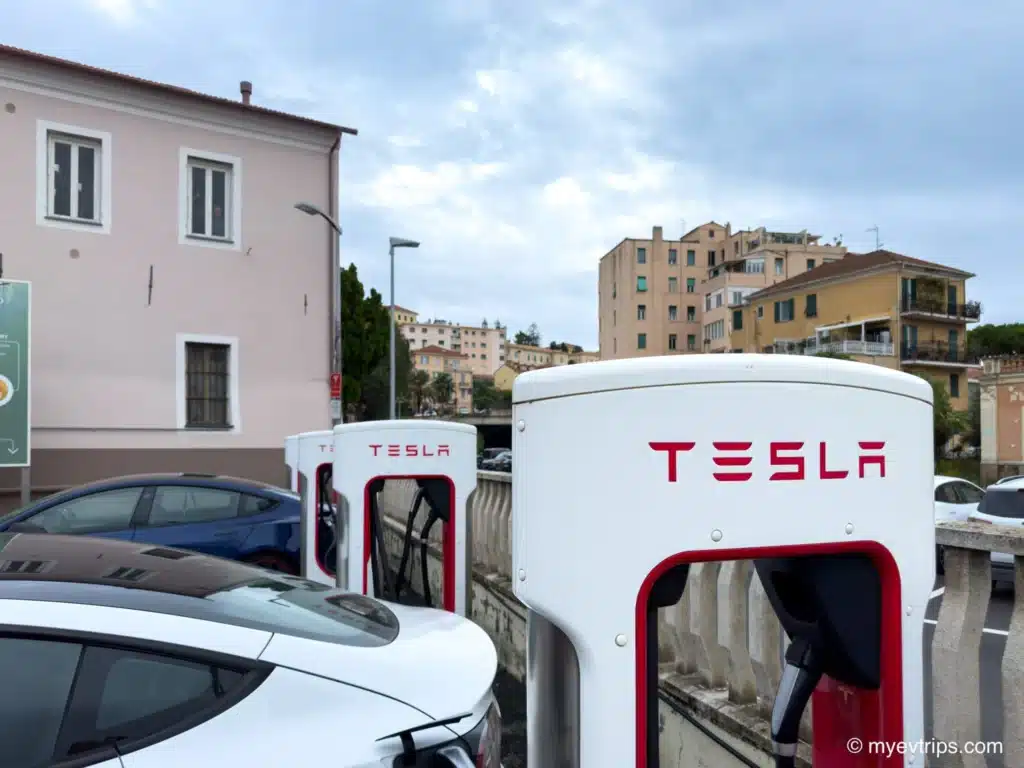
I had reservations at the Royal Garden Hotel, located on the city’s outskirts, primarily because it advertised free EV charging facilities. It’s also next to a metro line, saving me the need to drive and park in Milan.
To my disappointment, upon arrival, I found the charger roped off and unavailable. Inquiring with the hotel staff yielded indifferent responses, leaving me without the anticipated charging solution.
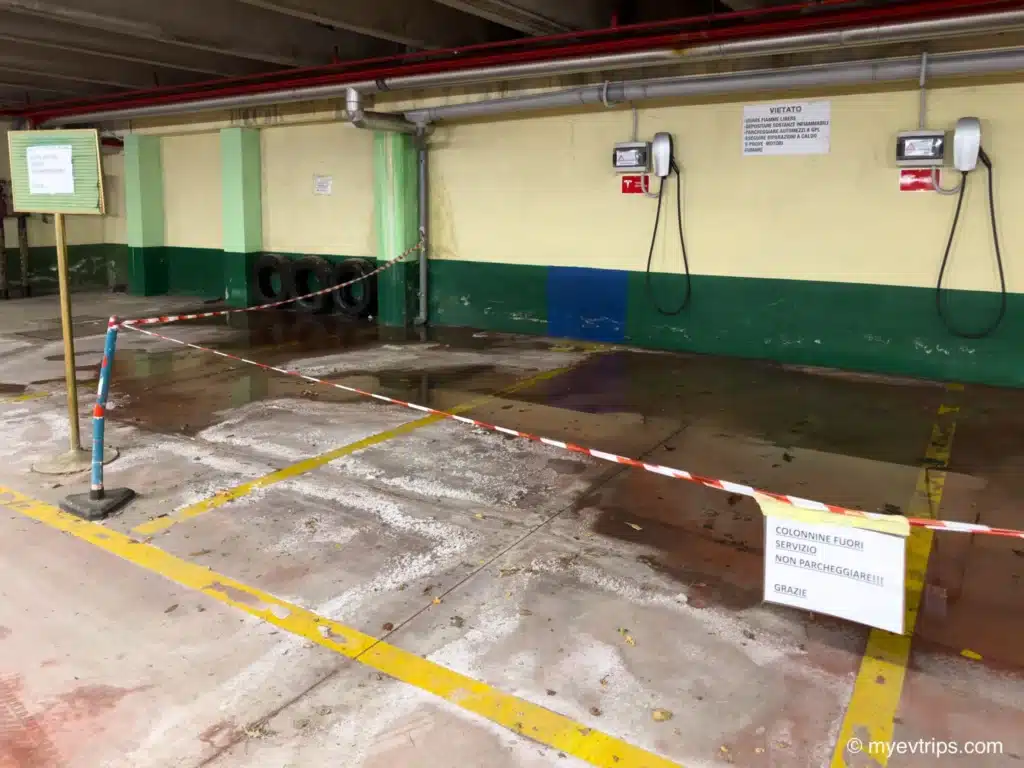
This experience underscored the importance of verifying the operational status of hotel charging amenities in advance and not solely relying on them for EV charging needs.
Exploring Milan
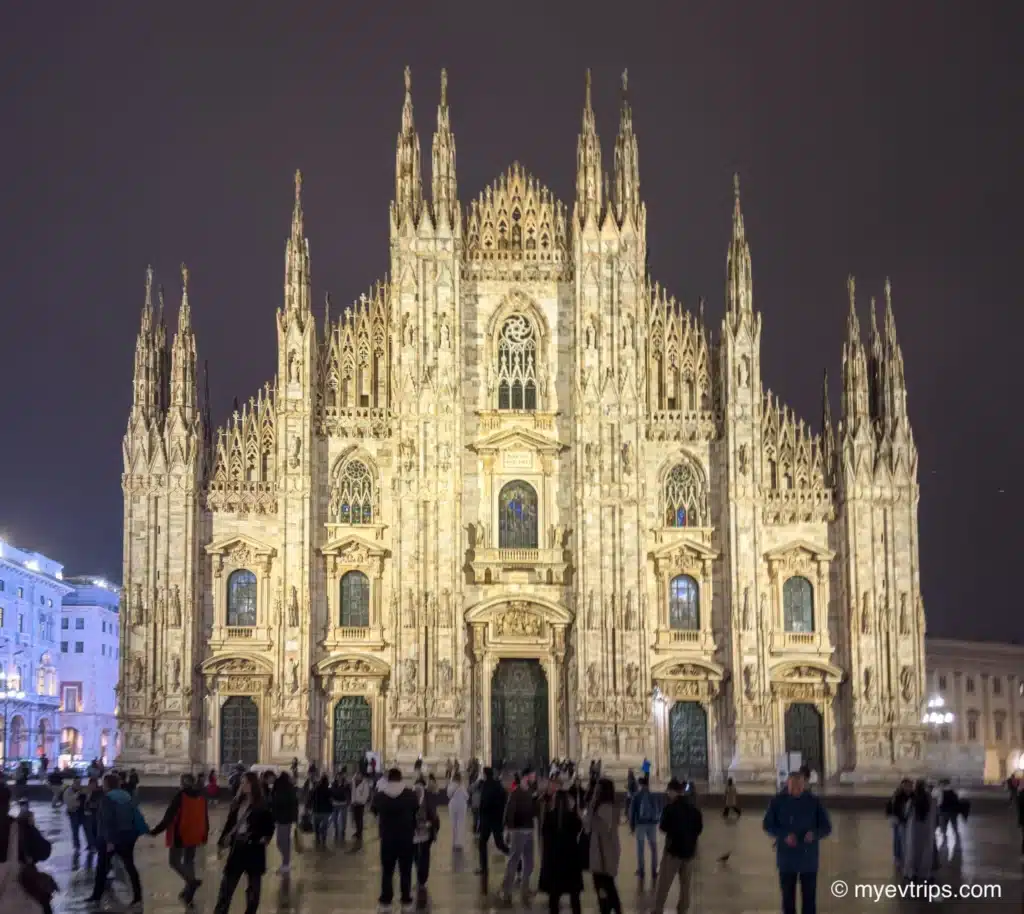
Despite the charging setback, I ventured into Milan to explore its rich cultural offerings.
I visited iconic landmarks such as the Duomo di Milano and the Galleria Vittorio Emanuele II, before capping off the visit with a fantastic meal.

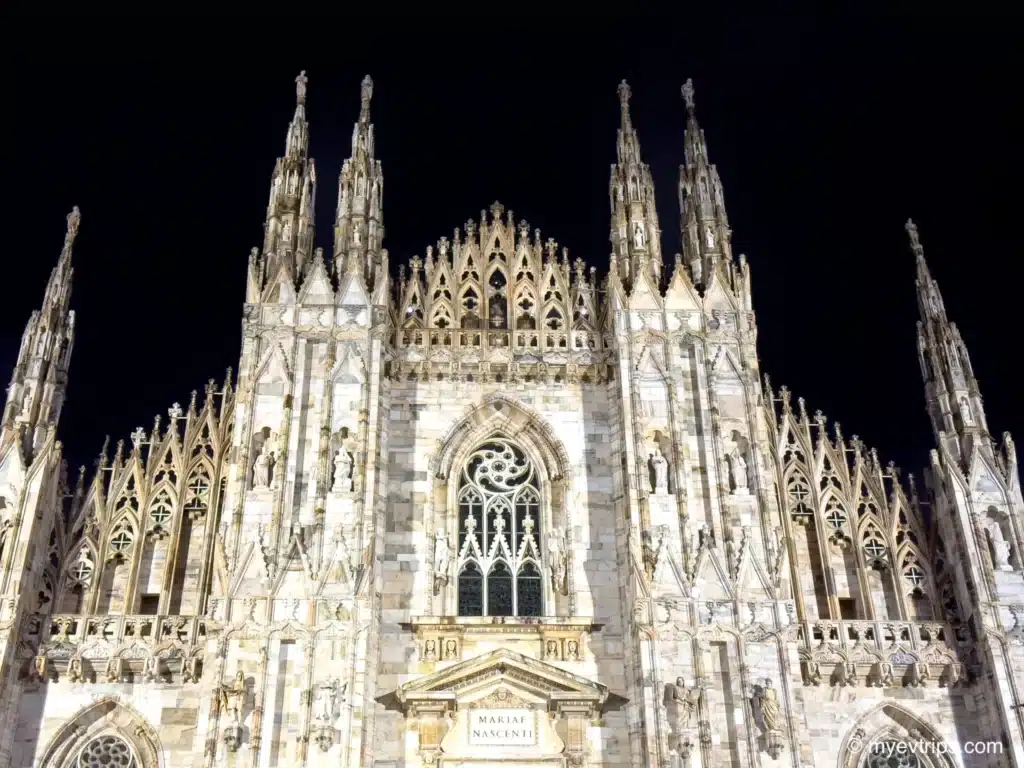
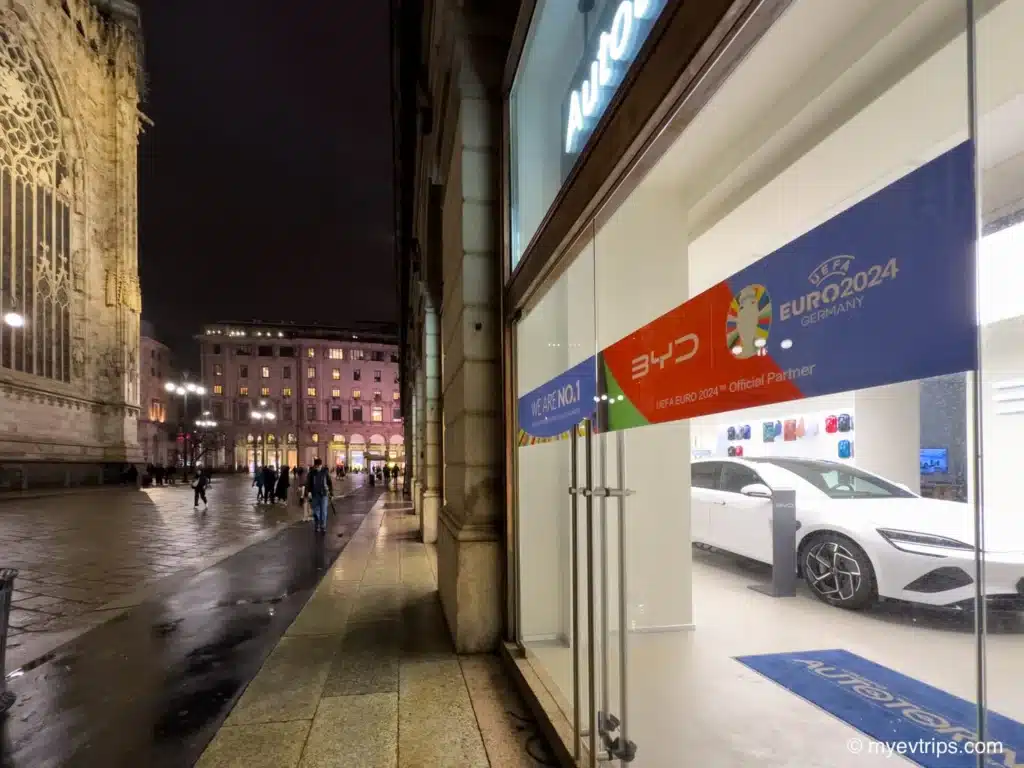
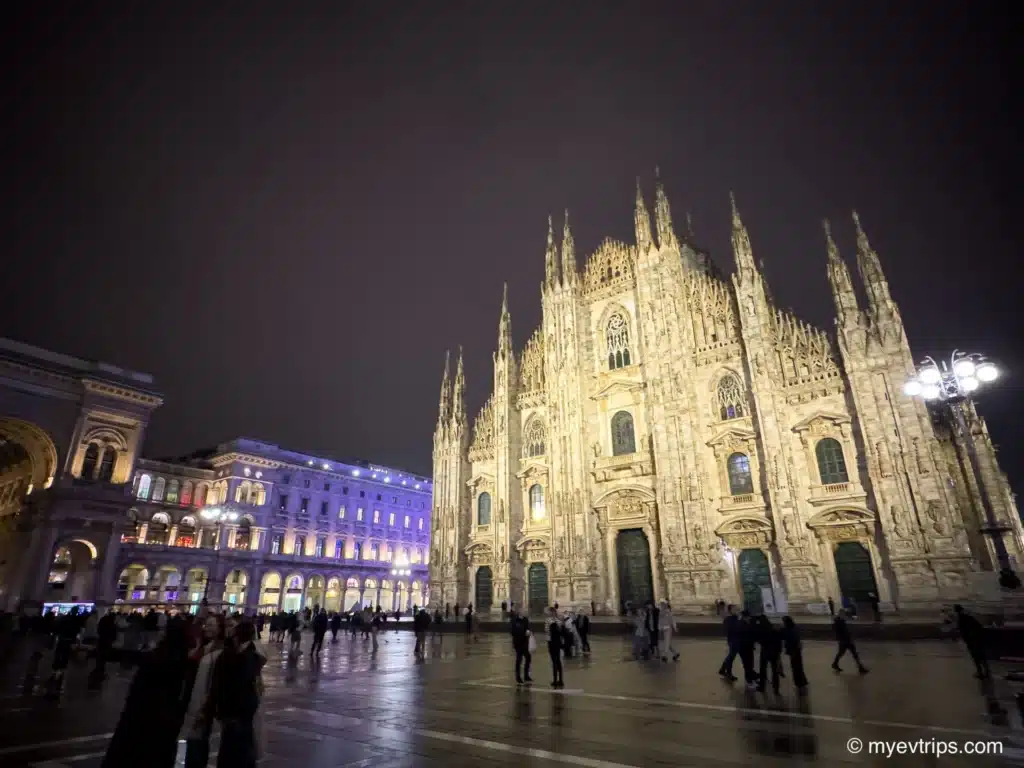
An interesting note, BYD has a showroom next to the Duomo. I knew they were a big company but this was surprising.
Lazy Lake Como Drive
The following day, I set off toward Lake Como, eager to experience its renowned beauty.
Since I wasn’t able to charge at my hotel as planned, I made a quick stop at a Tesla Supercharger in Como to ensure I had sufficient range for the journey ahead.
Despite a grey day, the drive toward Lake Como was beautiful. Winding roads took me past rolling vineyards, charming villages, and glimpses of the lake’s waters before climbing higher into the mountains.

I was able to have a quick top up and take advantage of prime parking while I wandered the shores in Menaggio.
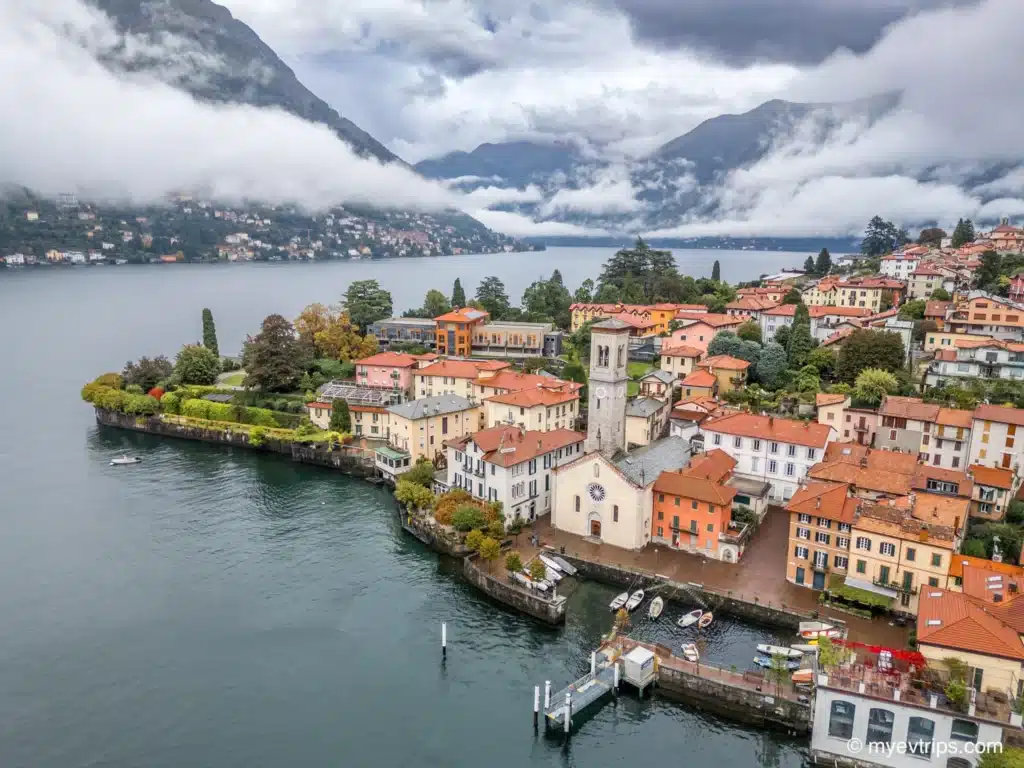
Sadly, the weather turned and I opted to cancel my planned ferry ride across the lake to Bellagio and, instead, continued on to Switzerland.
Scenic Swiss Alps
One of the most memorable segments of my journey was traversing the Susten Pass, renowned as one of the world’s most picturesque roads.

The route offered a series of winding paths, steep inclines, and ample pull-off areas, perfect for capturing the stunning vistas of rugged peaks and lush valleys.
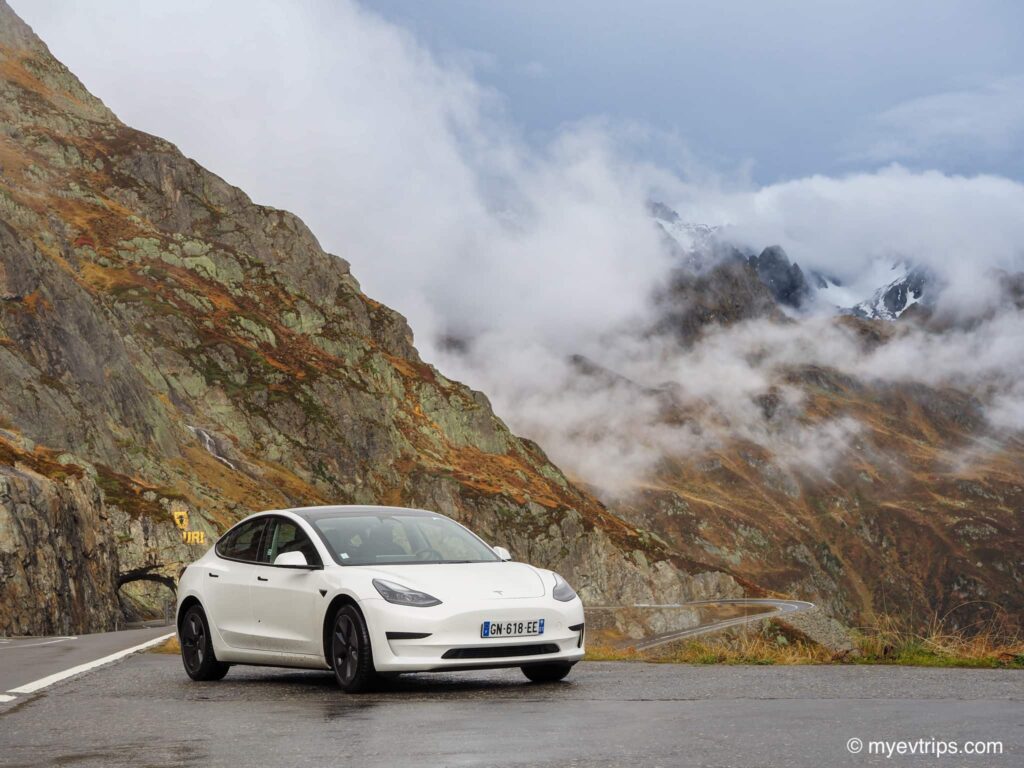
Despite the challenging twists and elevations, the well-maintained roads made the drive both exhilarating and safe.

In Lauterbrunnen, a village often dubbed the jewel of the Swiss Alps, I encountered some of the highest charging costs of my trip. The views certainly made up for that though 🙂
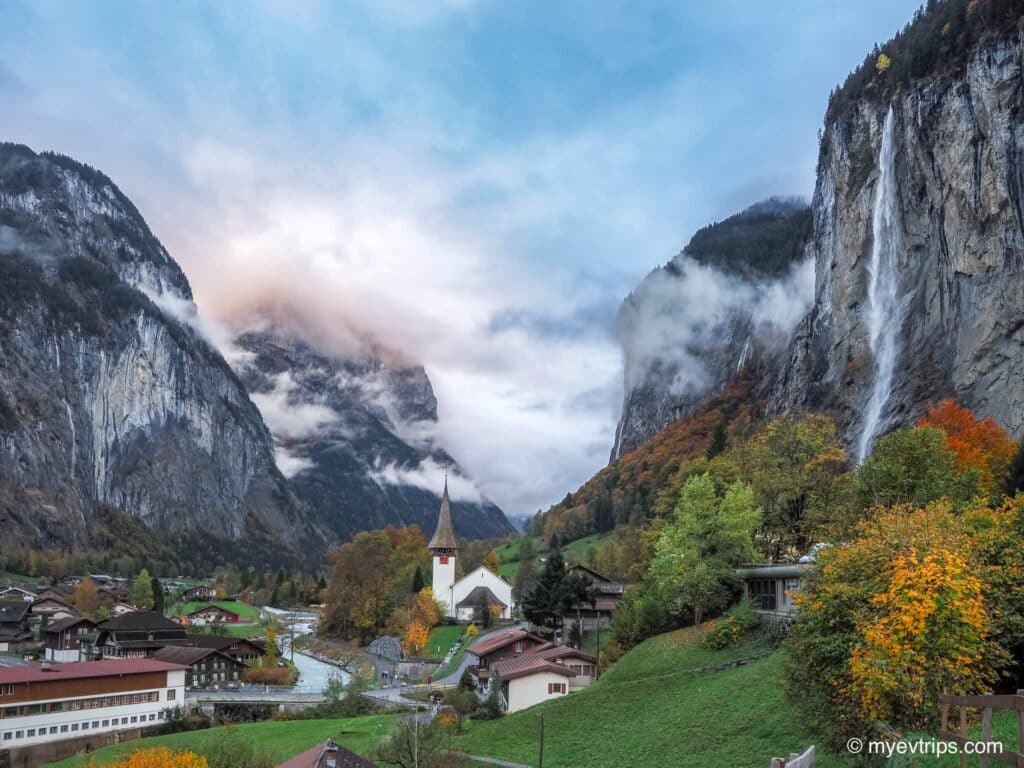
The local tourism center offeres an EV charging station with a steep flat fee of CHF 40 (approximately $64 CAD), making it the most expensive charge I’d experienced in over four years of EV driving.
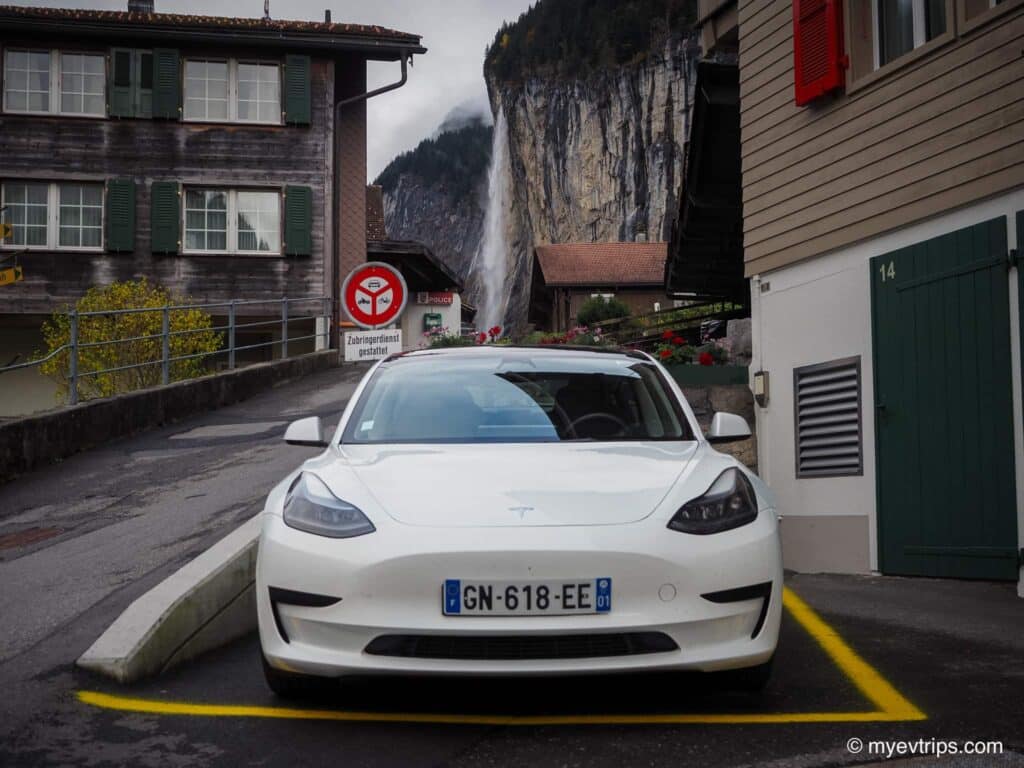
To maximize the value of this session, I charged my vehicle to 100% while taking the opportunity to explore the picturesque village.
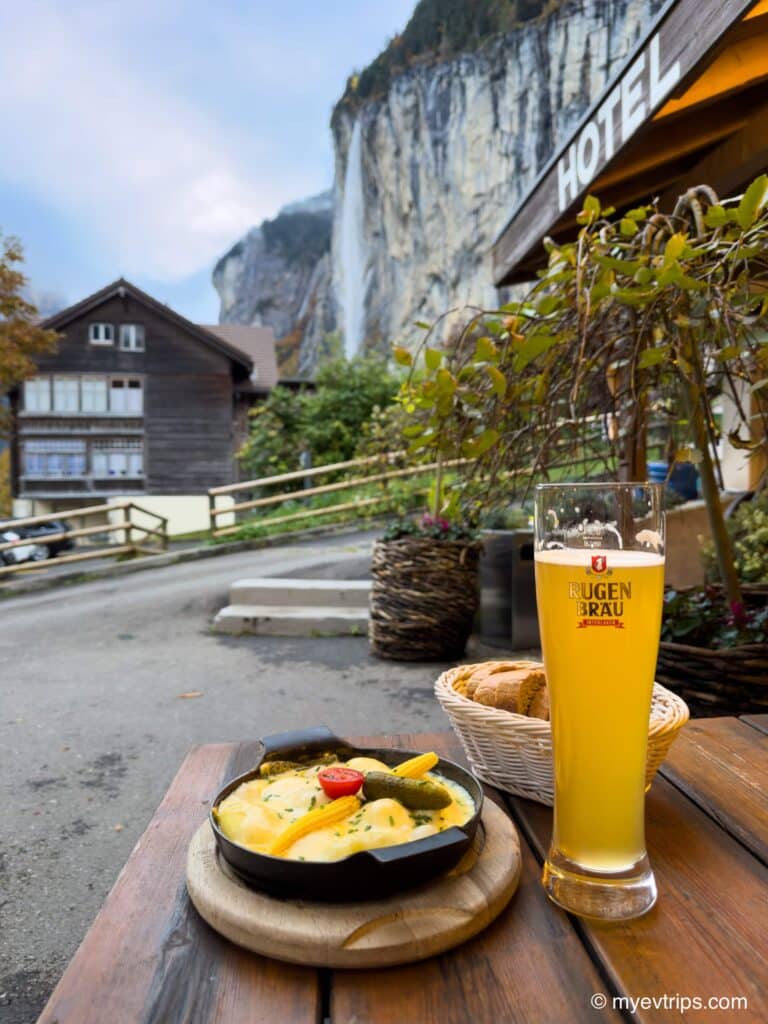
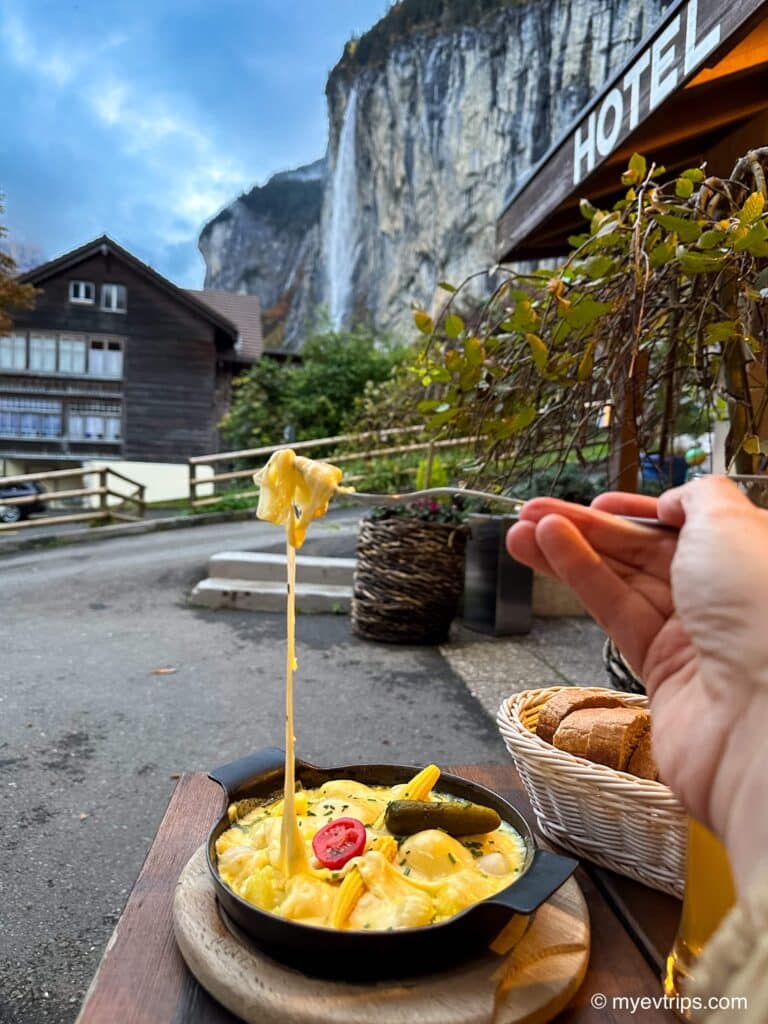
I indulged in a traditional Swiss meal at a nearby restaurant, enjoying raclette on a terrace overlooking the magnificent Staubbach Falls.
Leg 5: Switzerland → Toulouse, France
After an overnight stay in Lausanne at the B&B HOTEL Crissier, where I was once again foiled by a hotel charger that required an RFID card, I decided to combine breakfast with charging at a nearby grocery.
This practical approach ensured both I and my vehicle were ready for the day’s journey.
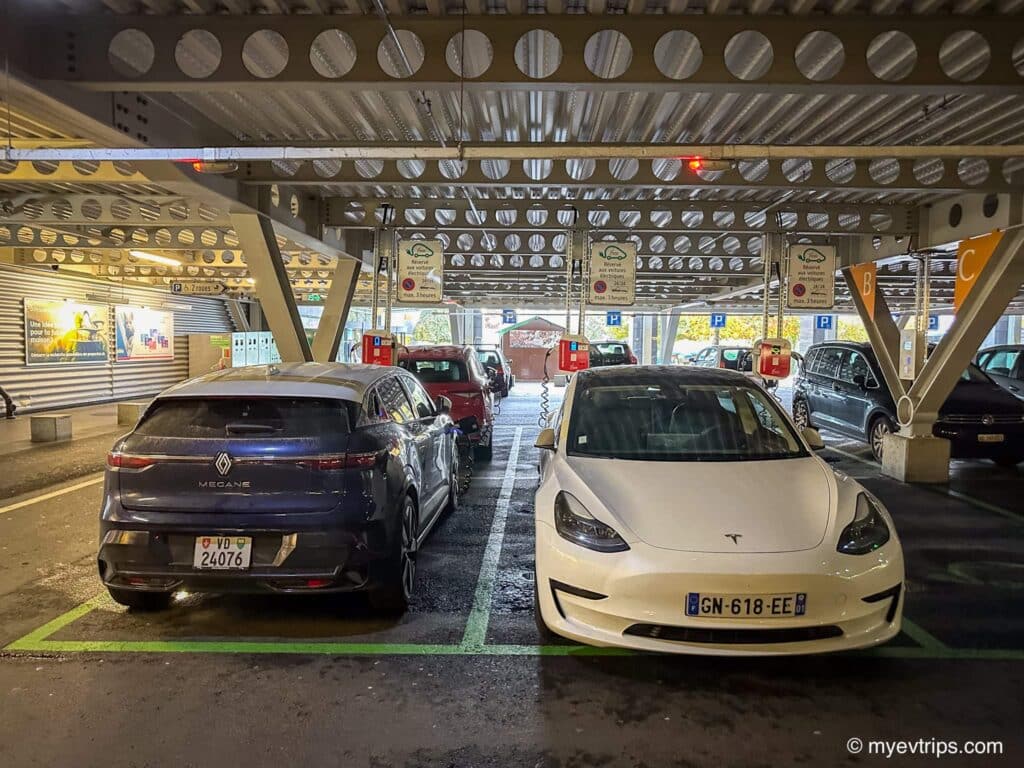

Leaving Lucerne, I drove along the northern shore of Lake Geneva, locally known as Lac Léman.
This route is famed for its picturesque landscapes, winding through charming towns like Montreux and Vevey, with the serene expanse of the lake on one side and terraced vineyards on the other.
Crossing into France, I arrived in Annecy, often referred to as the “Venice of the Alps” due to its intricate network of canals.
I located a public EV charger in a parking garage near the old town, conveniently situated for exploration. Annecy’s old town is a tapestry of narrow cobblestone streets, pastel-colored houses, and flower-lined canals.
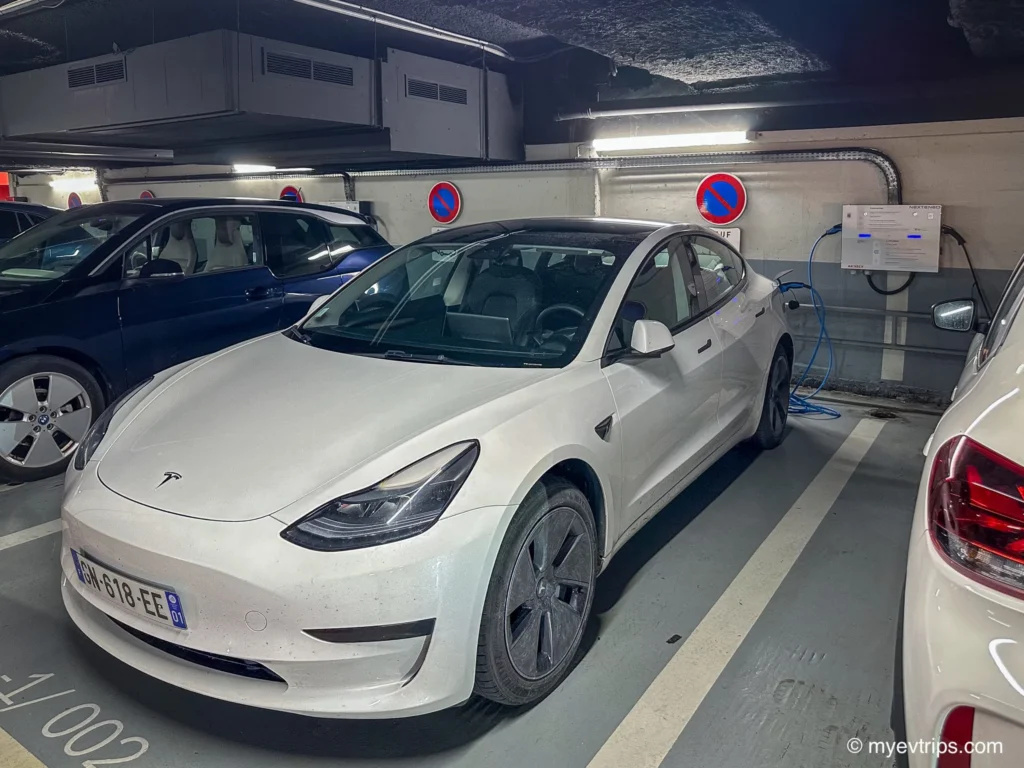
Landmarks such as the Palais de l’Île—a historic building resembling a ship anchored in the canal—and the towering Annecy Castle provide glimpses into the town’s rich history.
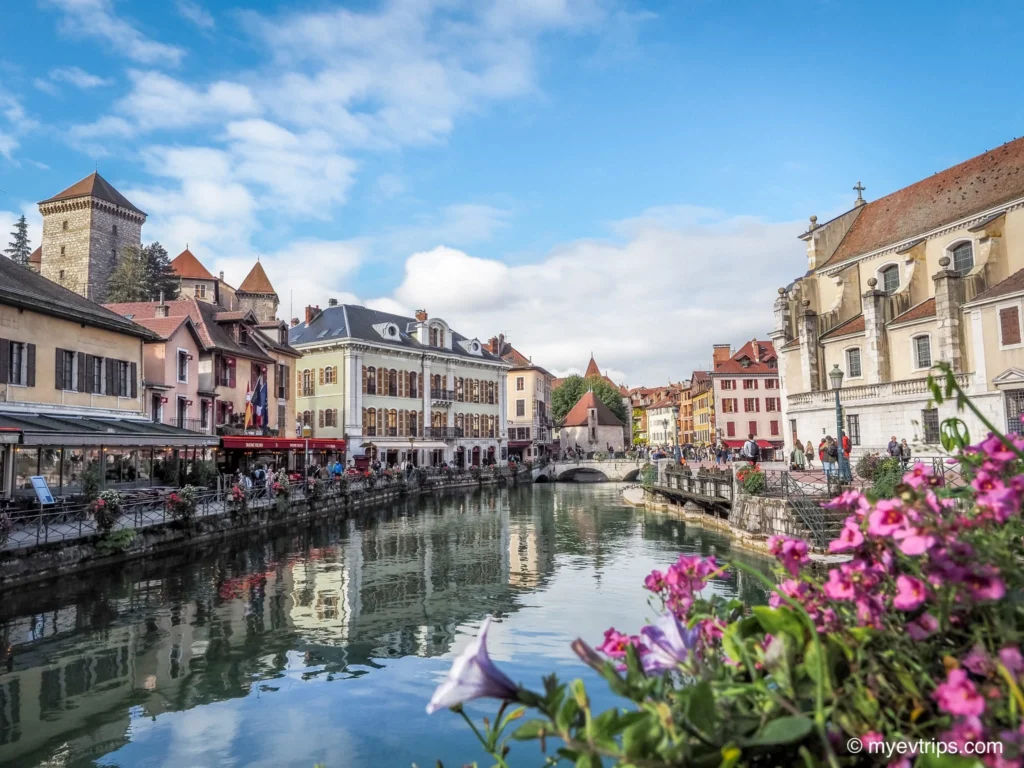
I spent a couple of hours wandering the scenic waterfront and old town, absorbing the vibrant atmosphere.
The Thiou River, one of France’s shortest rivers, winds through the town, its clear waters reflecting the surrounding architecture and adding to the enchanting ambiance.
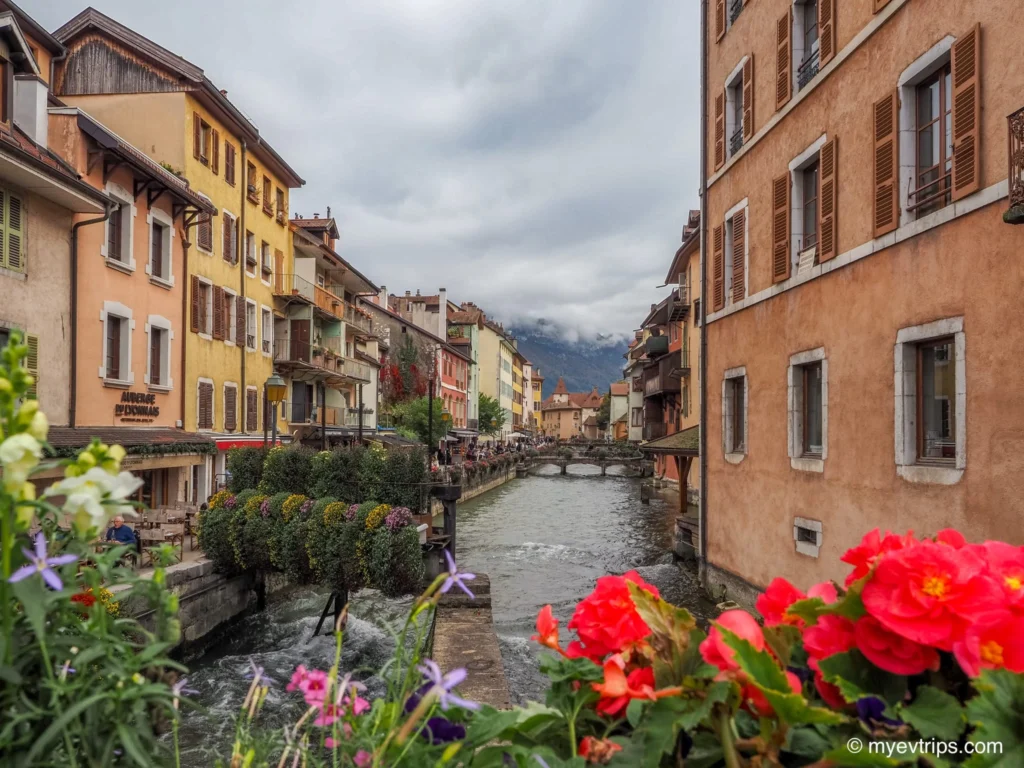
After soaking in the charm of Annecy, I continued south toward Toulouse, wrapping up this leg of the trip with a smooth and scenic drive through the French countryside.
The well-connected Supercharger network made the journey effortless, with a couple of quick stops to top up along the way.
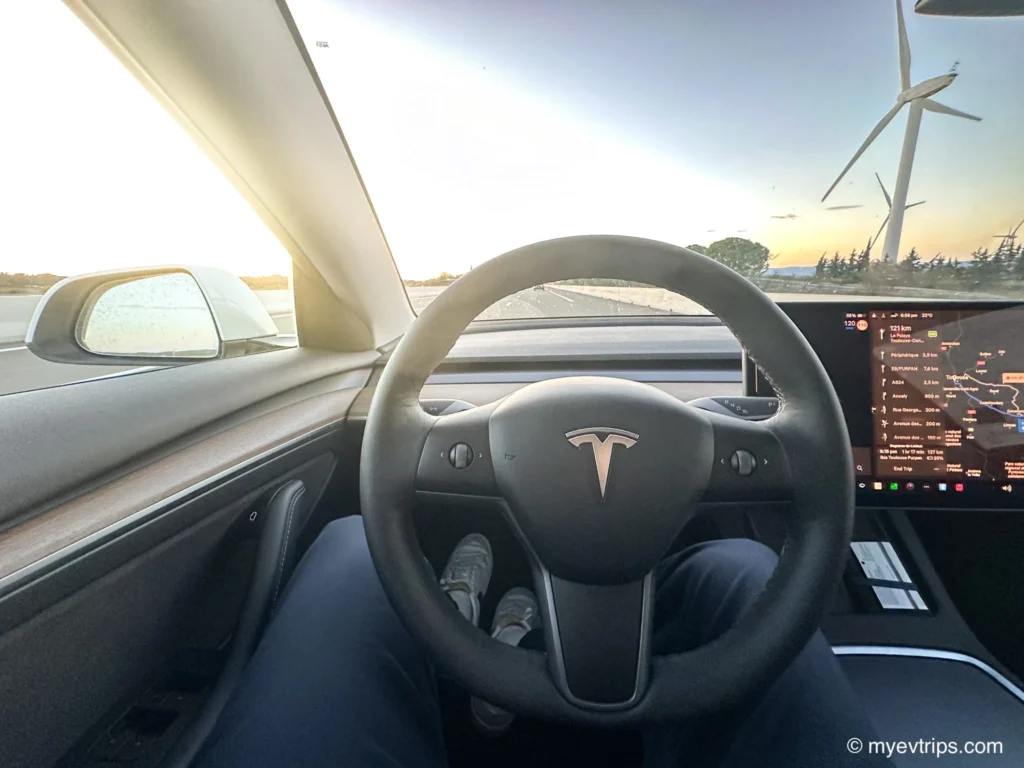
With no range anxiety to worry about, I was free to enjoy the changing landscapes—from rolling vineyards to quiet rural villages—before finally arriving back in Toulouse, where the trip had started.
Leg 6: Toulouse → San Sebastian, Spain
After exploring the Airbus Museum in Toulouse, the reason I circled back, I continued on to meet up with some friends in San Sebastián, Spain.

📌 Get Your Airbus Museum Tickets Here
The drive was smooth, and upon arrival, I checked into the Hotel Silken Amara Plaza, which offered a complimentary Tesla destination charger that actually worked—a welcome relief after previous charging challenges.
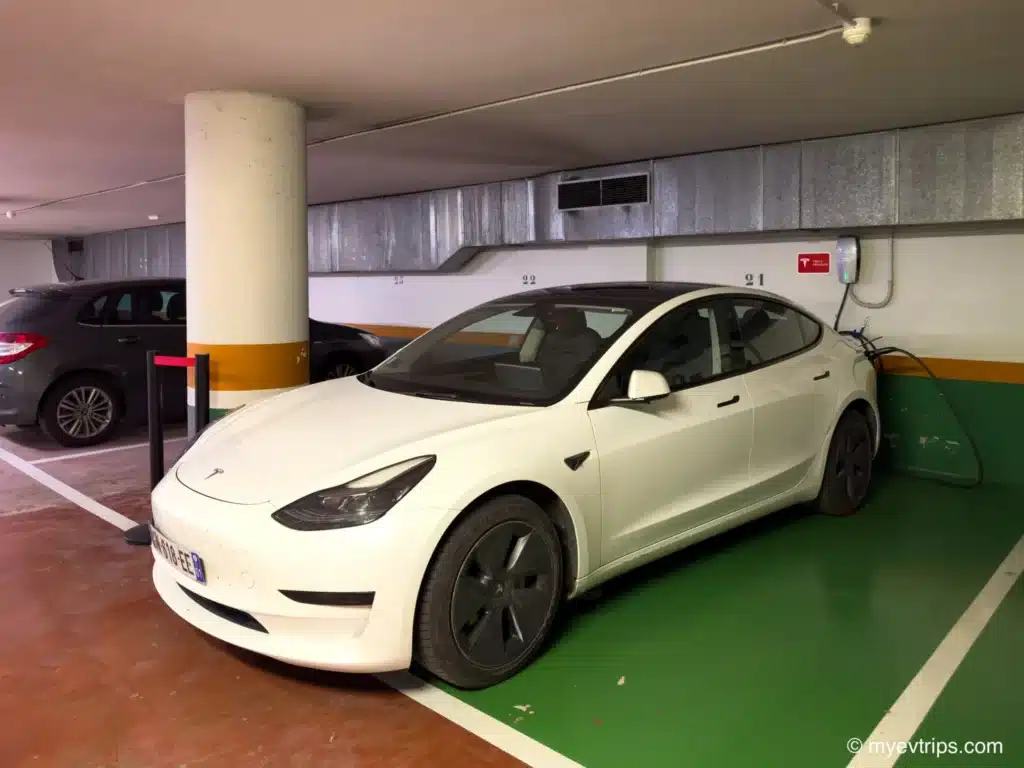
San Sebastián, renowned for its stunning beaches and vibrant culinary scene, provided the perfect backdrop for a couple days of relaxation and fun.
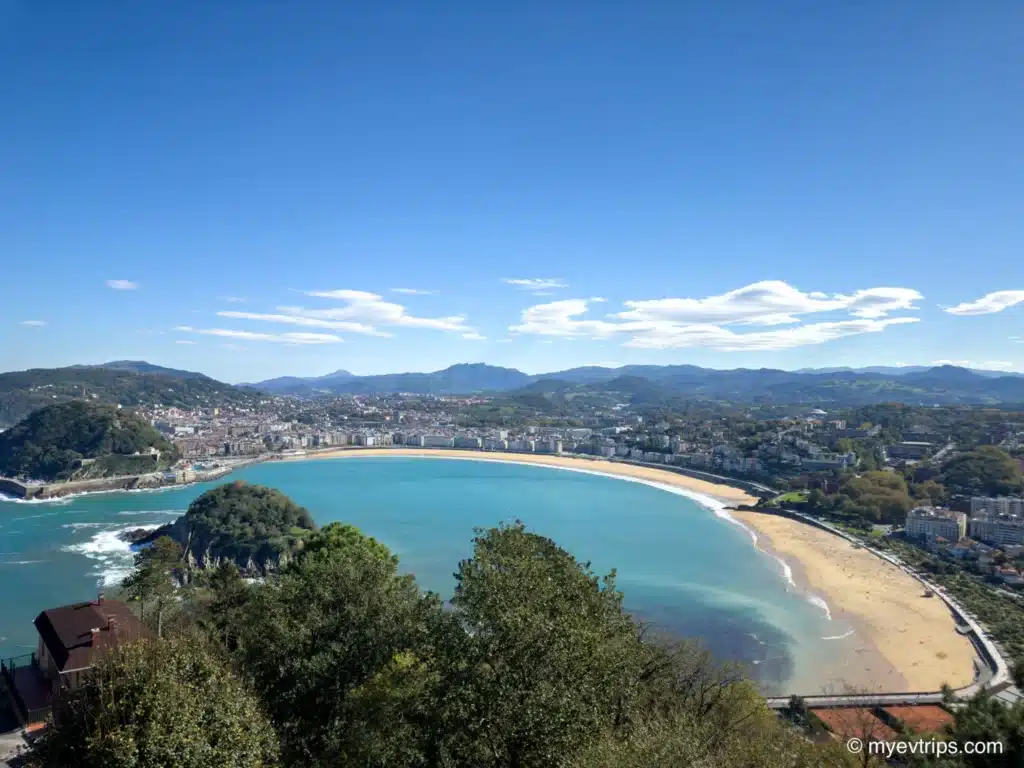
I took in a pintxos tour of the old town (highly recommend), and visited the San Telmo Museum to immerse myself in Basque culture.
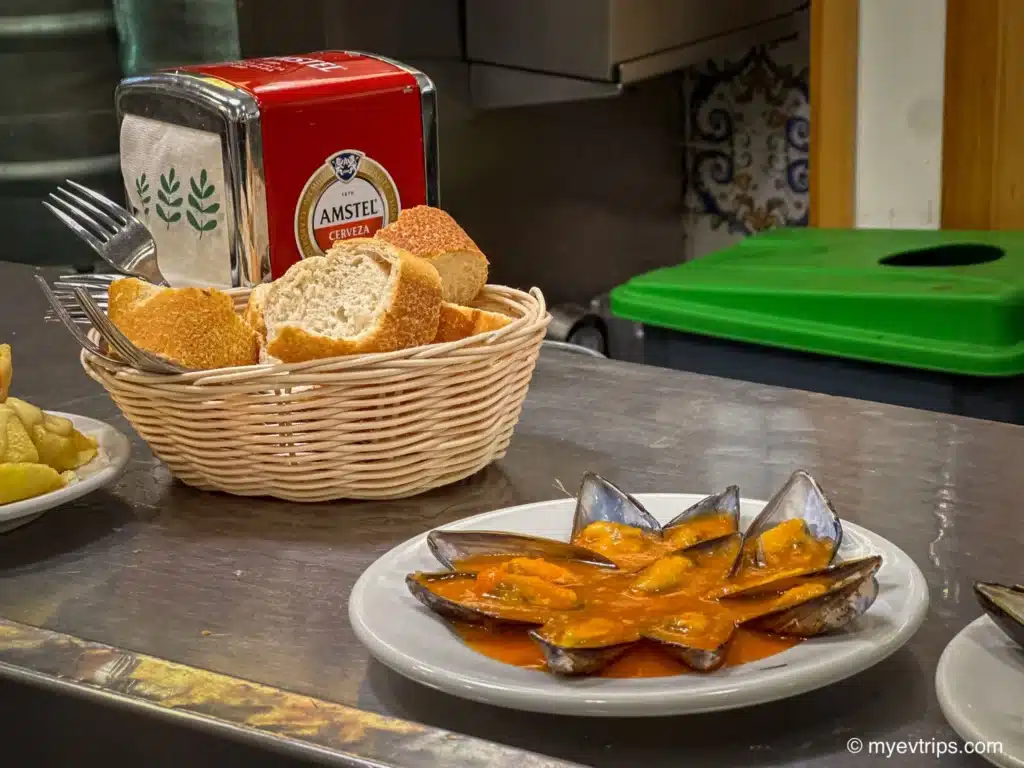
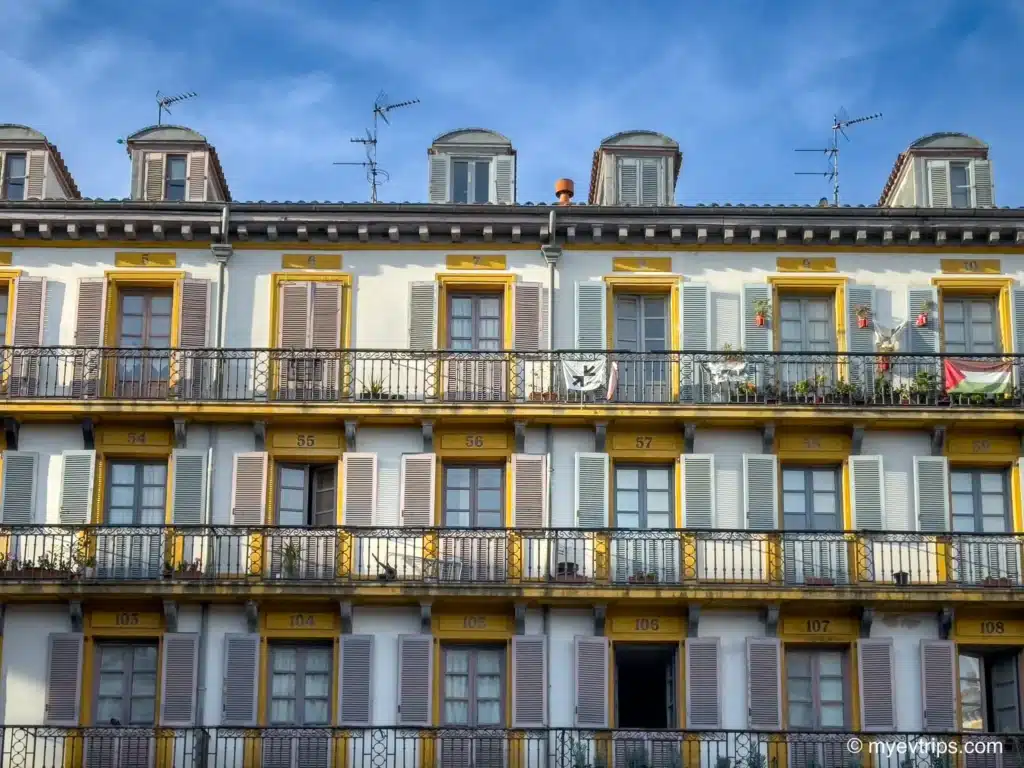


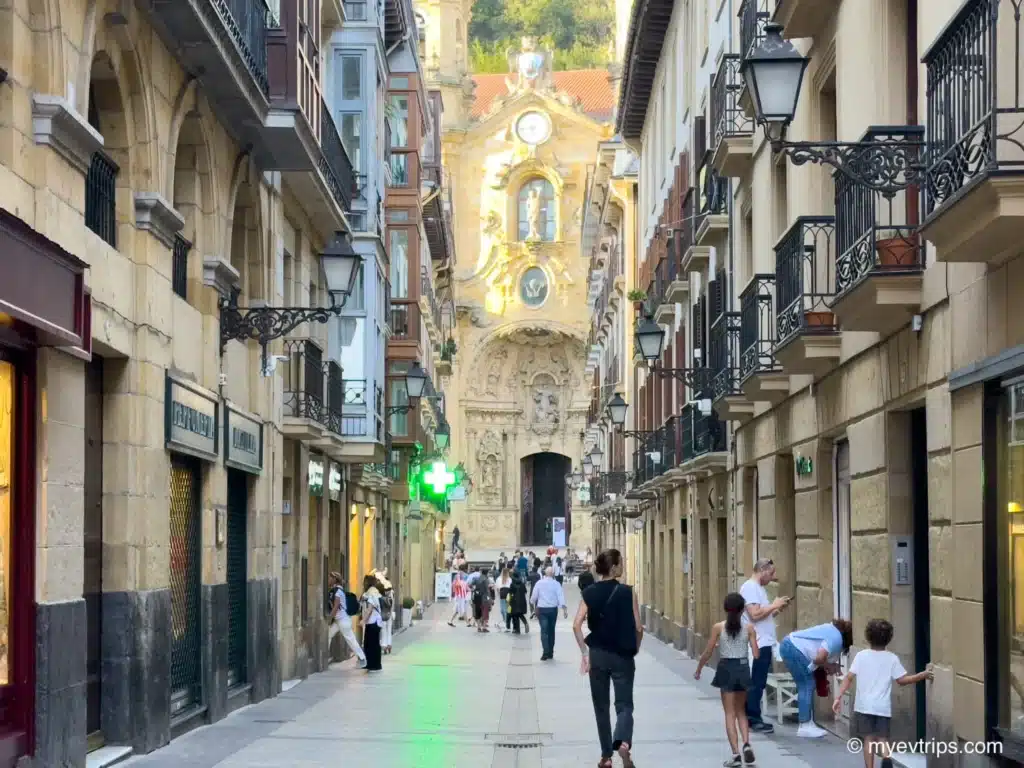
📌 Book Your San Sebastian Pintxos Tour Here
A ride on the funicular up Monte Igueldo offered panoramic views of the coastline, enhancing the overall experience.
Leg 7: San Sebastian → Bilbao
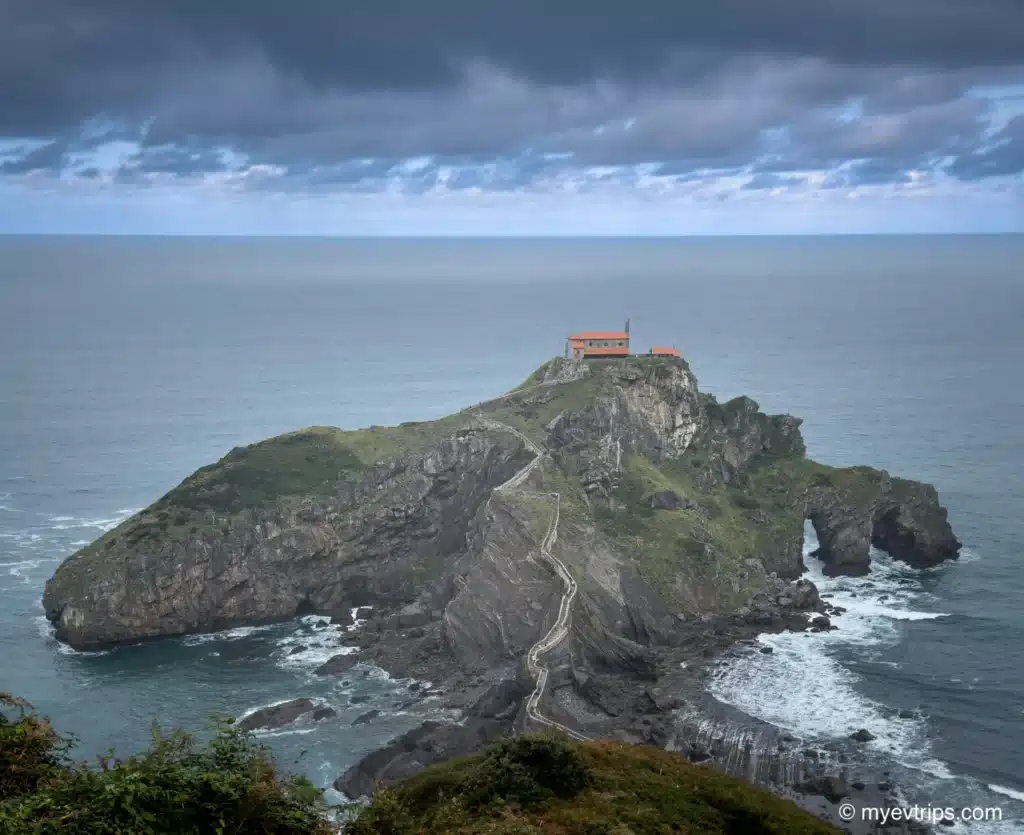
Continuing along the coast, I took a scenic detour to San Juan de Gaztelugatxe, a picturesque islet featuring a church accessible via a winding staircase—a location famed for its appearance in Game of Thrones.
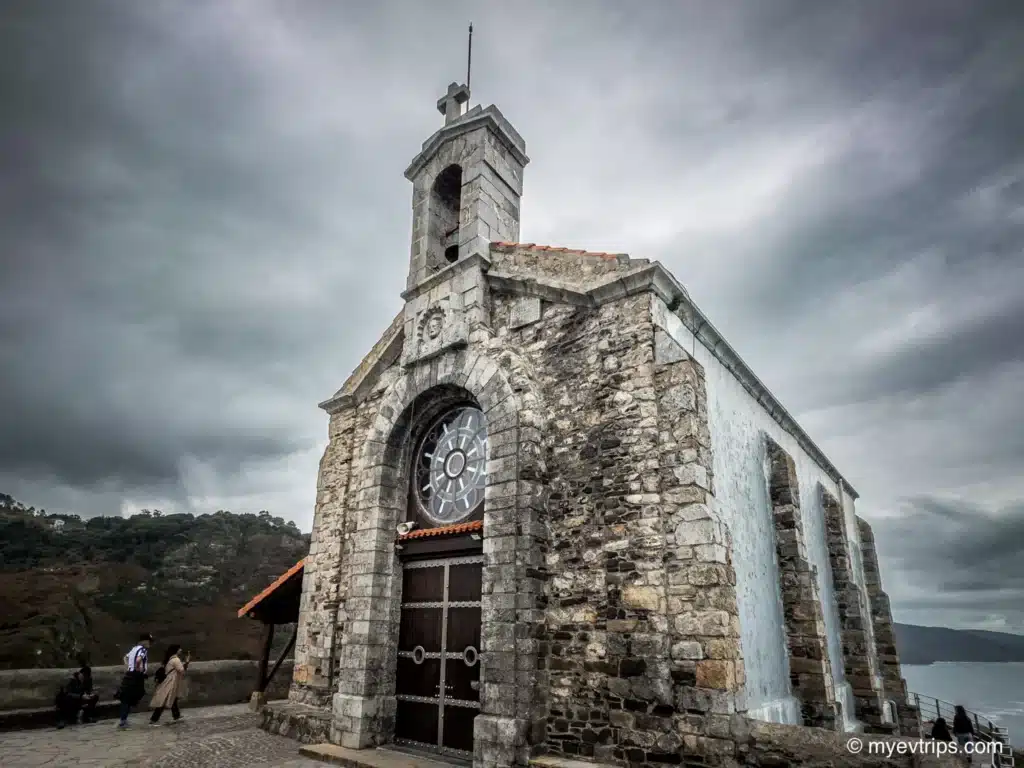
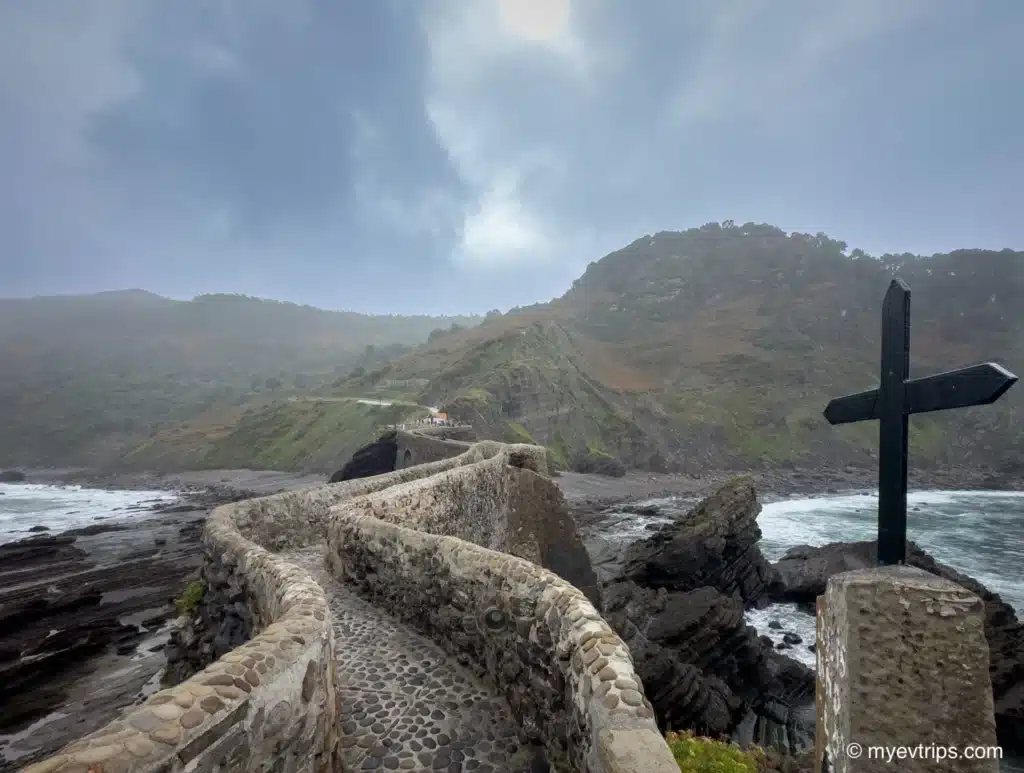
The challenging climb was rewarded with breathtaking views of the Bay of Biscay.
Arriving in Bilbao, I checked into the Hesperia Bilbao Hotel, which boasts EV chargers run by IONITY.
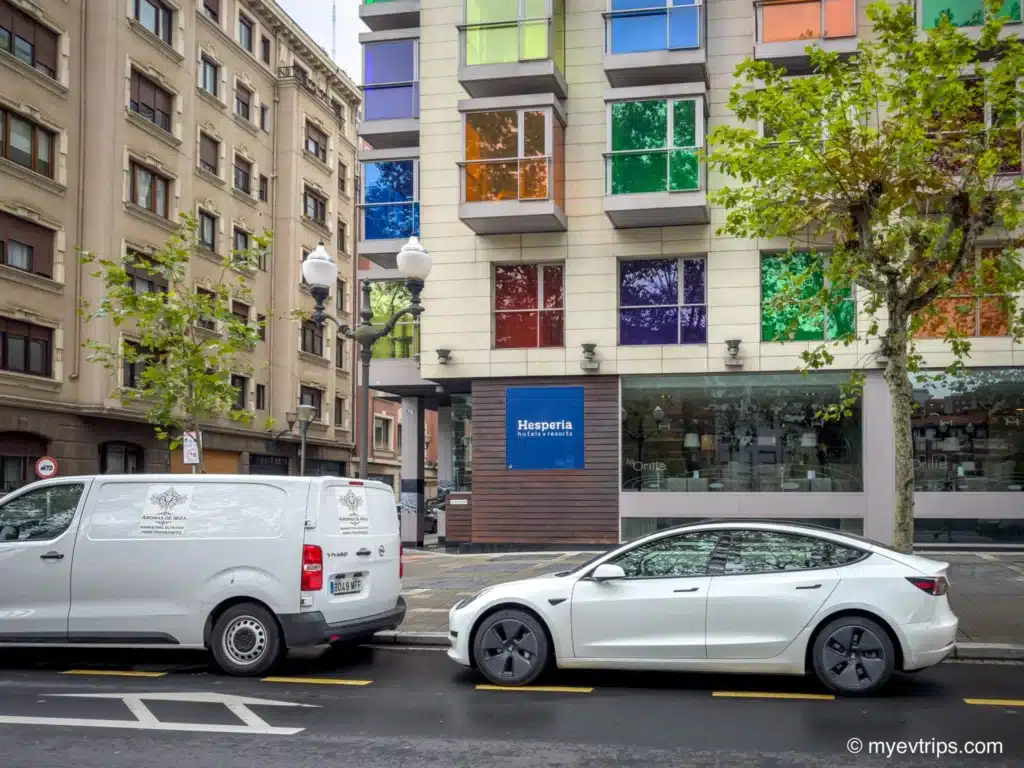
This seamless charging experience allowed me to explore the city’s cultural landmarks without concern for my vehicle’s battery.
I packed a lot into my 24 hours in Bilbao. The Guggenheim Museum was the clear standout—its innovative design is just as impressive as the contemporary art inside.
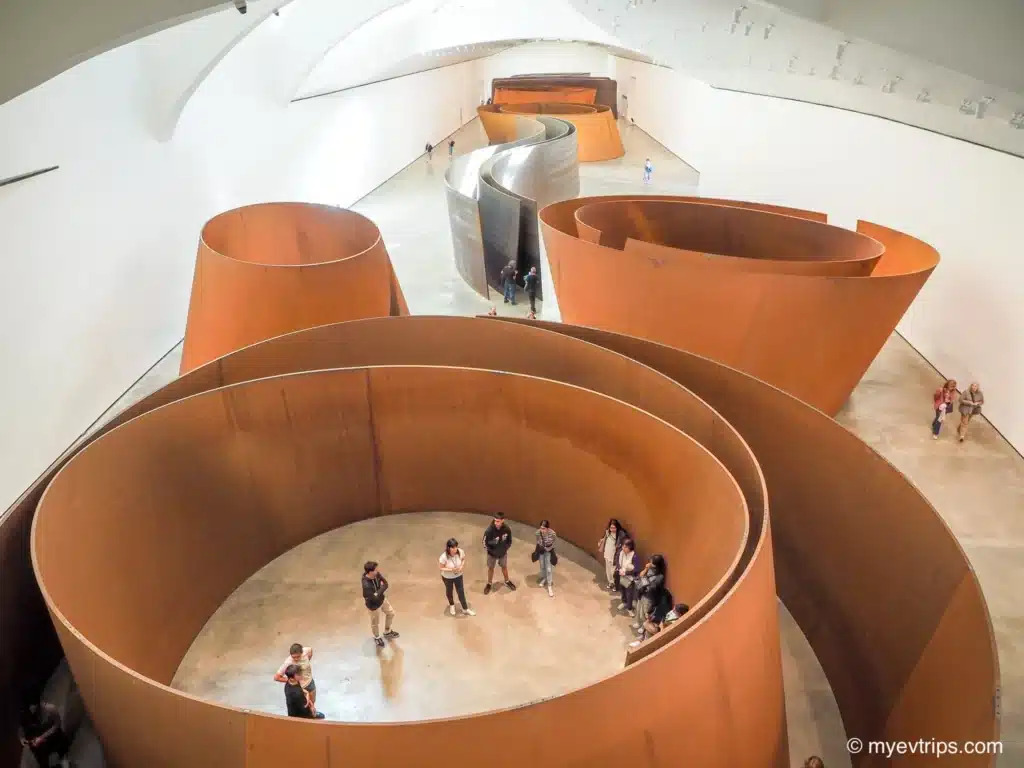


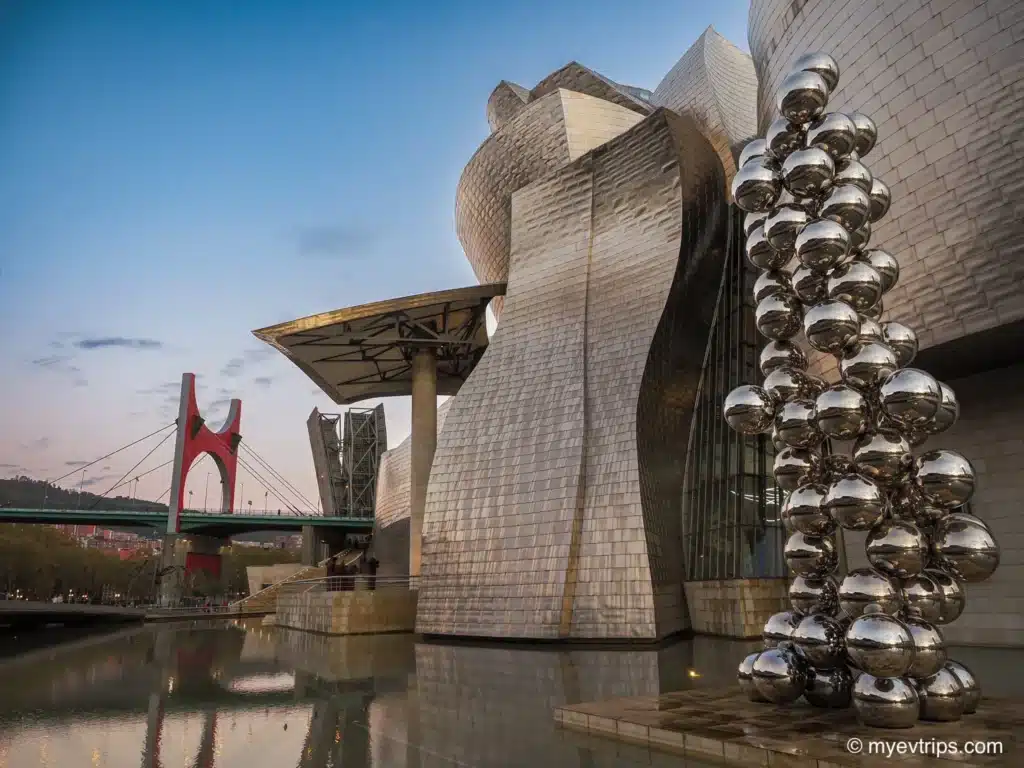

Even if you’re not big on museums, the building alone is worth the visit. From massive installations to thought-provoking pieces, it’s a feast for the senses.
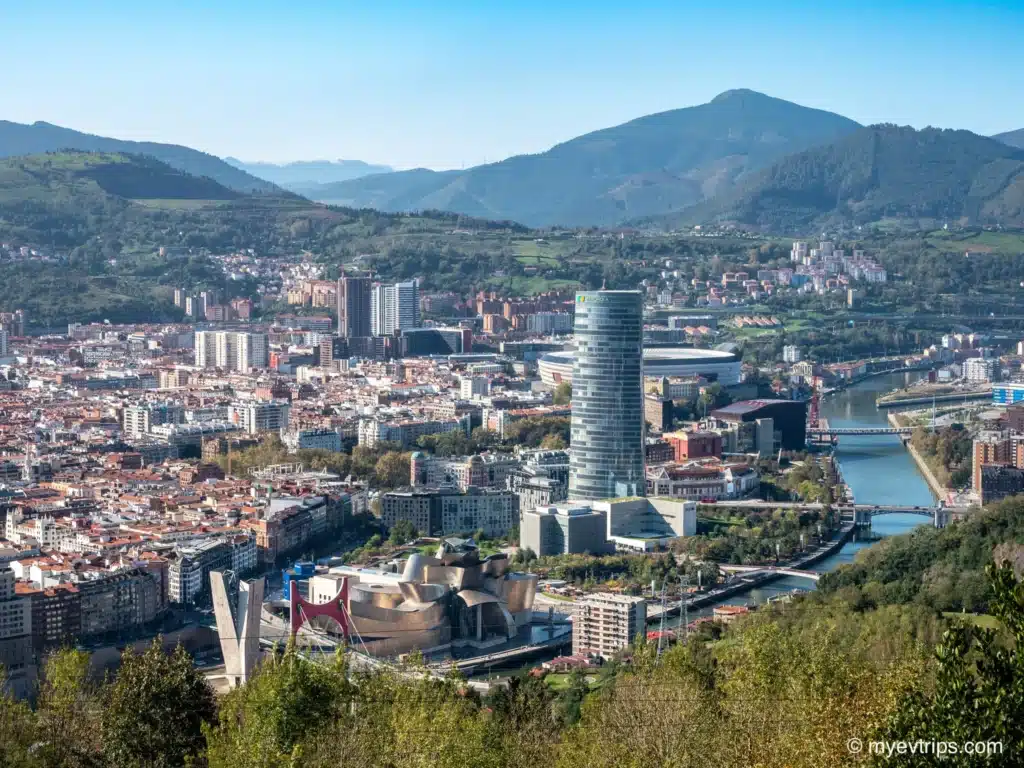
Pintxo bars spilled onto the sidewalks, locals strolled the riverfront, and the city buzzed with energy. It’s the kind of place where you could happily get lost, camera in hand and no set agenda.
Leg 8: Bilbao → Andorra
The journey from Bilbao to Andorra presented challenges, particularly with EV charging infrastructure. Long stretches without charging stations required meticulous planning.
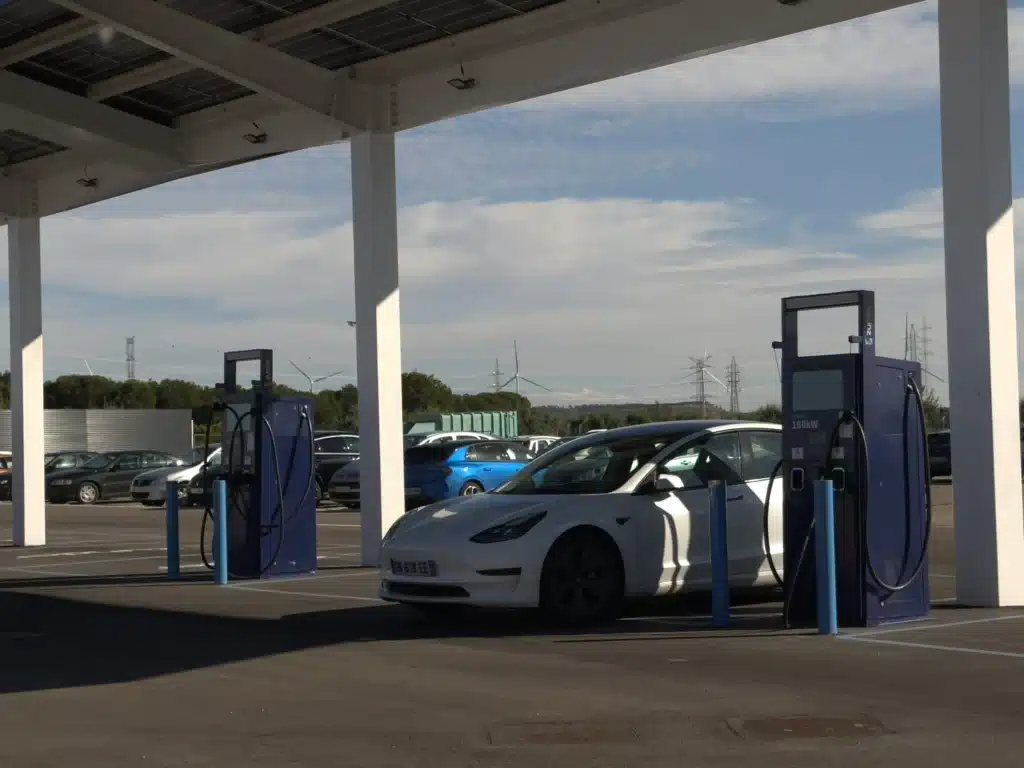
Charging in Spain was hit-or-miss—one fast-charging station had 12 chargers, but only two worked, leading to delays and frustration.
Still, I was able to sort it out so the range anxiety was temporary.
A stop in Zaragoza provided both a cultural interlude and a necessary charging opportunity, thanks to the city’s more reliable EV facilities then it was on to Andorra.
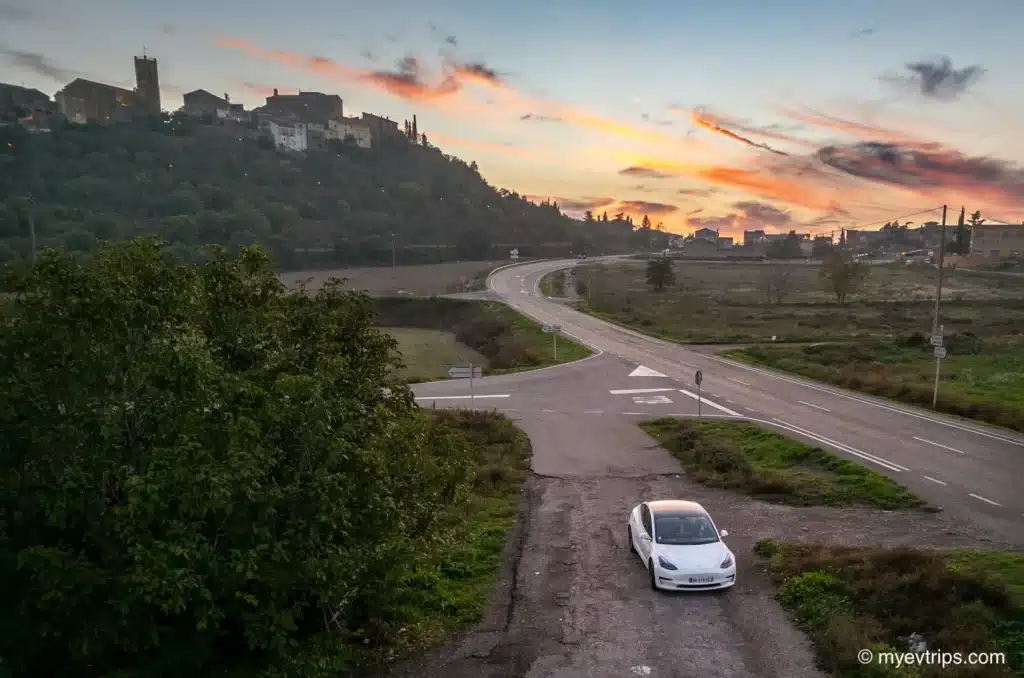
Although tempted to stop at one of the many wineries in the region, I was on a tight schedule to catch my flight out of Toulouse, France.
Leg 9: Andorra → Toulouse
Upon arriving at the Hotel Roc Blanc & Spa, I was eager to plug in and crash for the night. The hotel advertised free EV charging, which was a significant factor in my booking decision.
However, I ran into a couple of hiccups. First, the charging station was tucked away in a tight underground parking garage, which made maneuvering tricky.
To complicate things, the valet had already gone home for the night, and the hotel staff seemed hesitant to let me try navigating it myself.
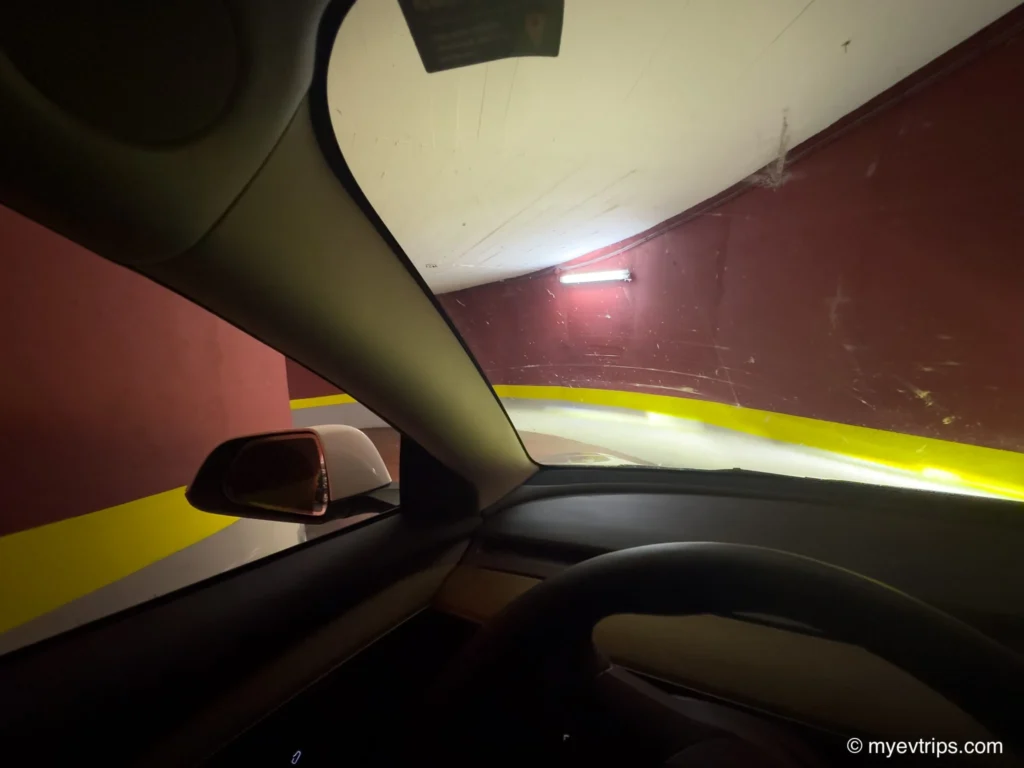
After some convincing and very careful navigation, I managed to squeeze the car down the tight ramp. The relief was short-lived—the chargers didn’t work once I got there. After several failed attempts, I finally got the mobile charger going on a Level 1 plug.
Just as I was about to leave, the owner showed up. I did my best to explain in broken French that the Tesla charger wasn’t working… only for it to suddenly work when I plugged in again. I didn’t have the energy to question it. Embarrassed, I thanked him and called it a night.
Exploring Andorra on a Full Charge
With a fully charged battery, I set out to explore Andorra’s attractions. My first stop was the Andorra la Vella Viewpoint, offering panoramic views of the capital nestled amidst the Pyrenees mountains. The crisp mountain air and breathtaking scenery made it a worthwhile visit.
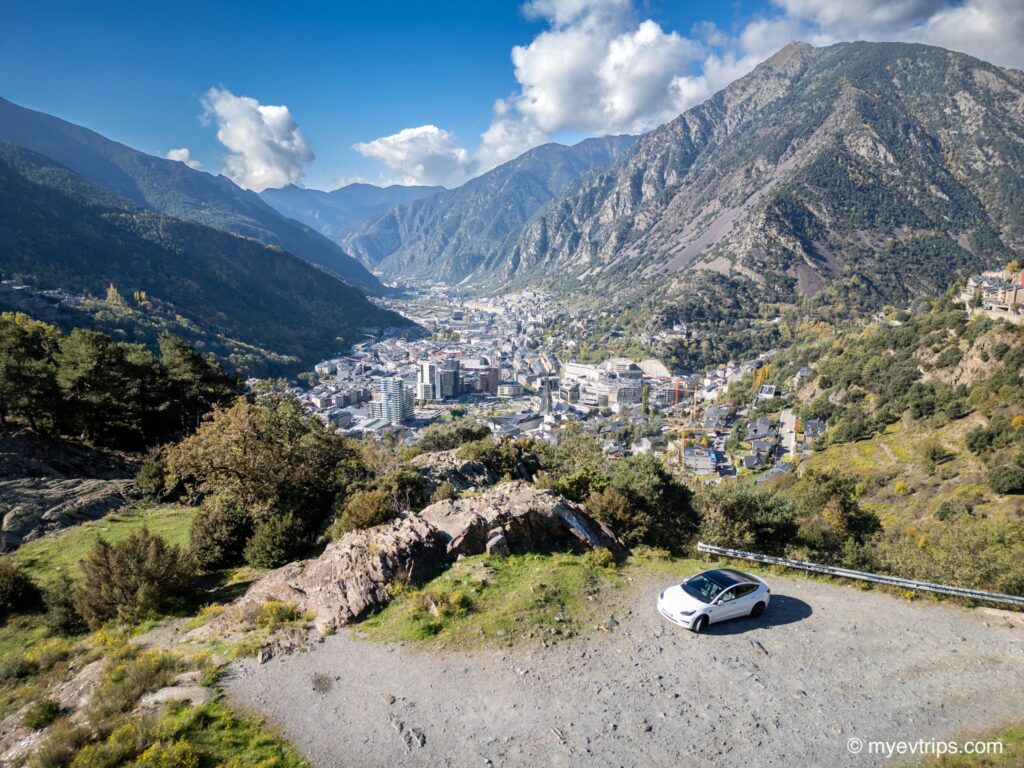
Next, I visited the Andorra Automobile Museum, home to an impressive collection of over 80 classic and vintage cars, motorcycles, and bicycles.
Although there were no electric vehicles in the collection, it was still an impressive showcase of automotive history.
From vintage race cars to classic luxury models, the museum offered a fascinating glimpse into the evolution of design and engineering.
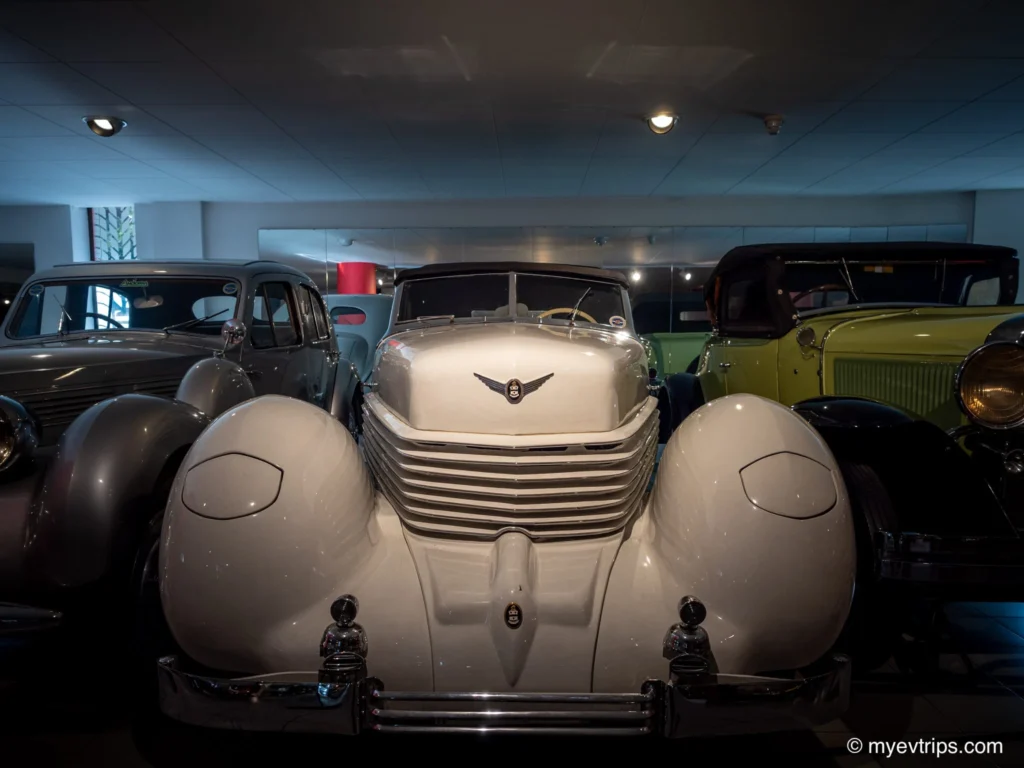
Before heading back to France, I visited the Roc del Quer Viewpoint with its striking bronze statue perched on a scenic overlook.
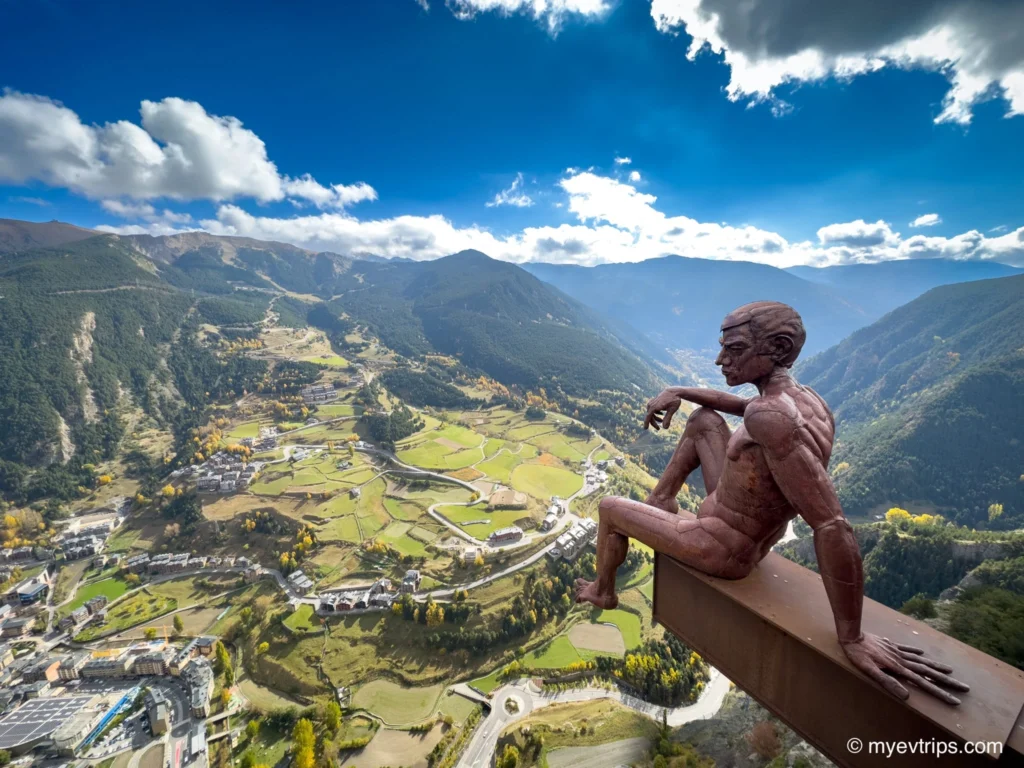
Designed by artist Miguel Ángel González, this piece stands as a symbol of Andorra’s blend of modern art and natural beauty.
The panoramic views of the surrounding valley made it a perfect spot to reflect on the journey before the final leg to Toulouse.
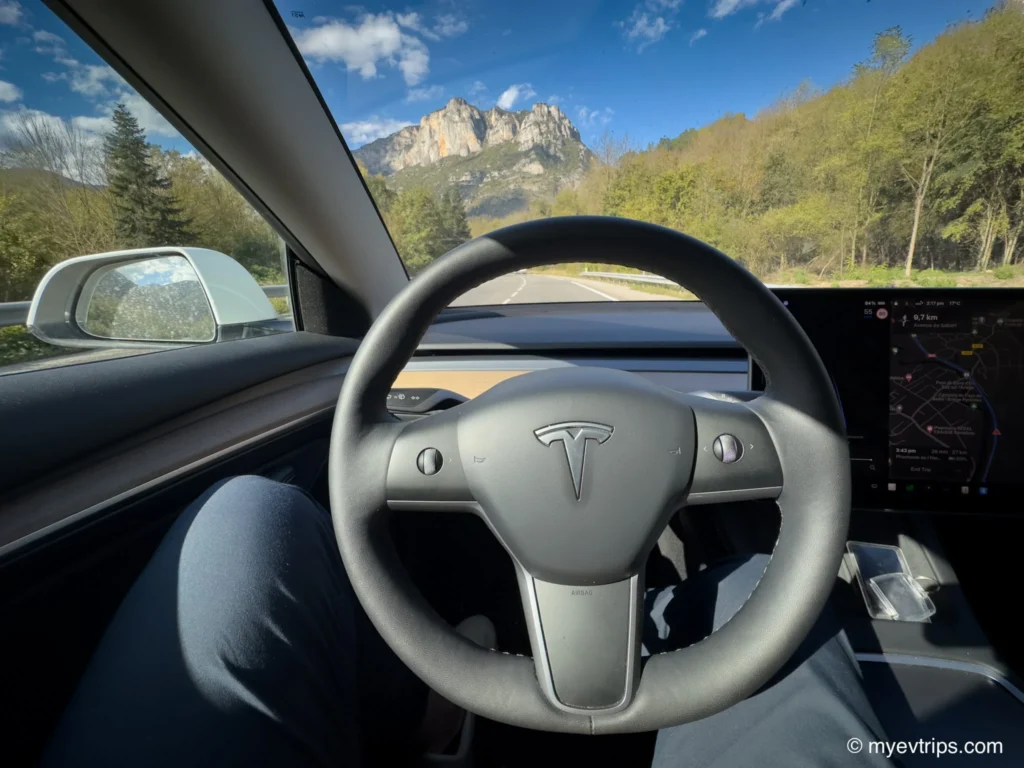
Crossing back into France, I enjoyed a smooth drive along the N20 highway, with the descent from the Pyrenees providing ample opportunities for regenerative braking.
My last charging stop on this European road trip was in the scenic town of Foix.
Rather than using a fast charger, I opted for a street-side station near the town center, which gave me the perfect excuse to stretch my legs and explore while the car topped up.
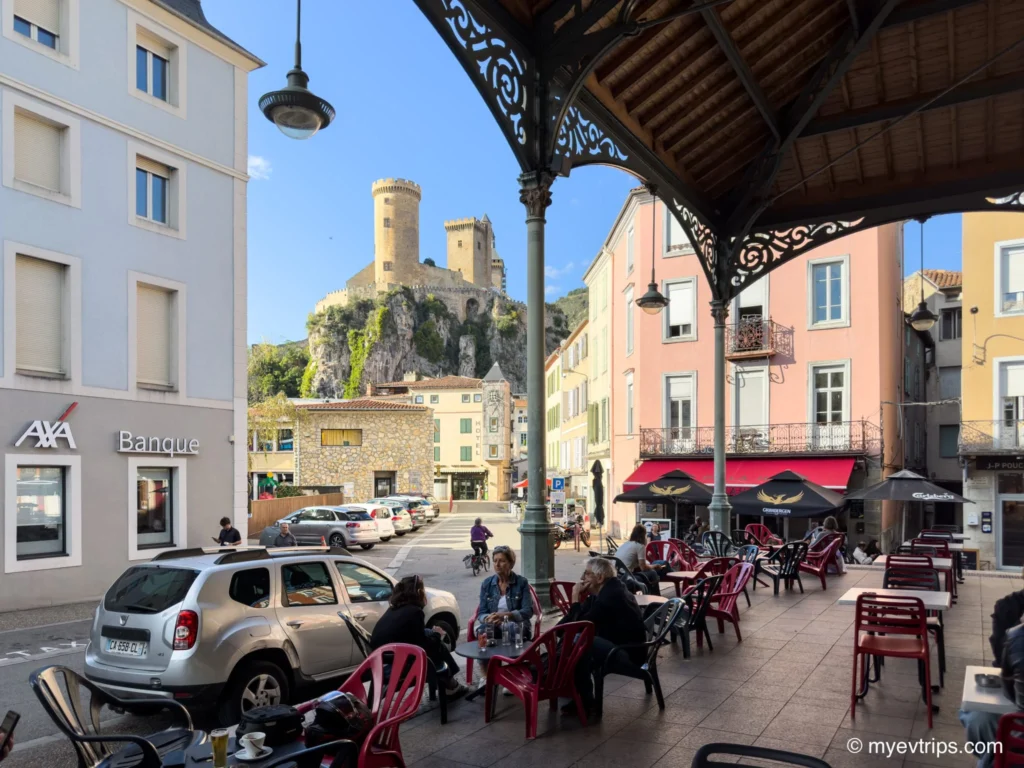
With my Tesla plugged in, I took the opportunity to enjoy one last cortado at a nearby café, soaking in the view of Château de Foix.
This medieval fortress, perched high above the town, is an impressive sight, and having a moment to appreciate it made the stop even more memorable.
Rental Return and Celebration
After the leisurely charge in Foix, I continued toward Toulouse, making a final stop at a Tesla Supercharger near Toulouse-Blagnac Airport to top up before returning the car.
I ensured the battery was at 80%+, as stipulated in my rental agreement, before heading to the drop-off location.
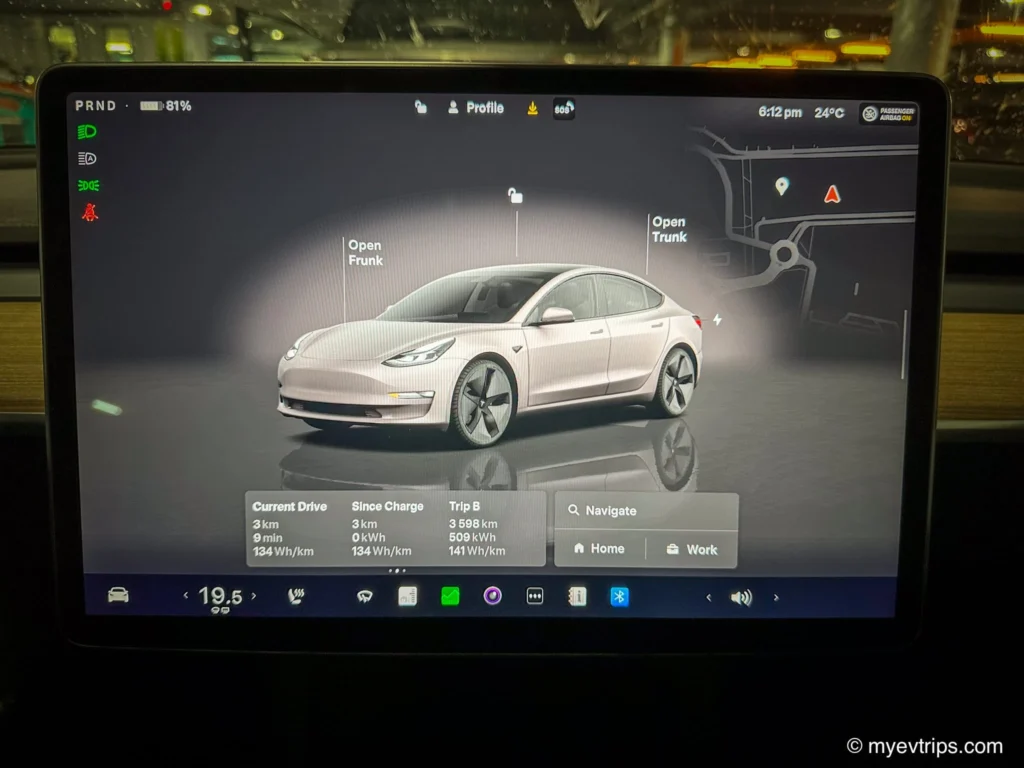
The return process couldn’t have been easier—a quick check-in, a once-over of the car, and within minutes, I was officially finished with my 3,500 km EV journey across Europe.
Book Here: Search for European EV Rentals with Europcar
With my bags in hand, I ordered an Uber to my hotel, and in a fitting end to my electric adventure, a Hyundai EV showed up to take me into the city.
My driver, a friendly local, was curious about my trip, and I did my best to chat with him about my travels in broken French. It was interesting to hear a local’s persepective on EV travel and adoption in Europe vs North America.
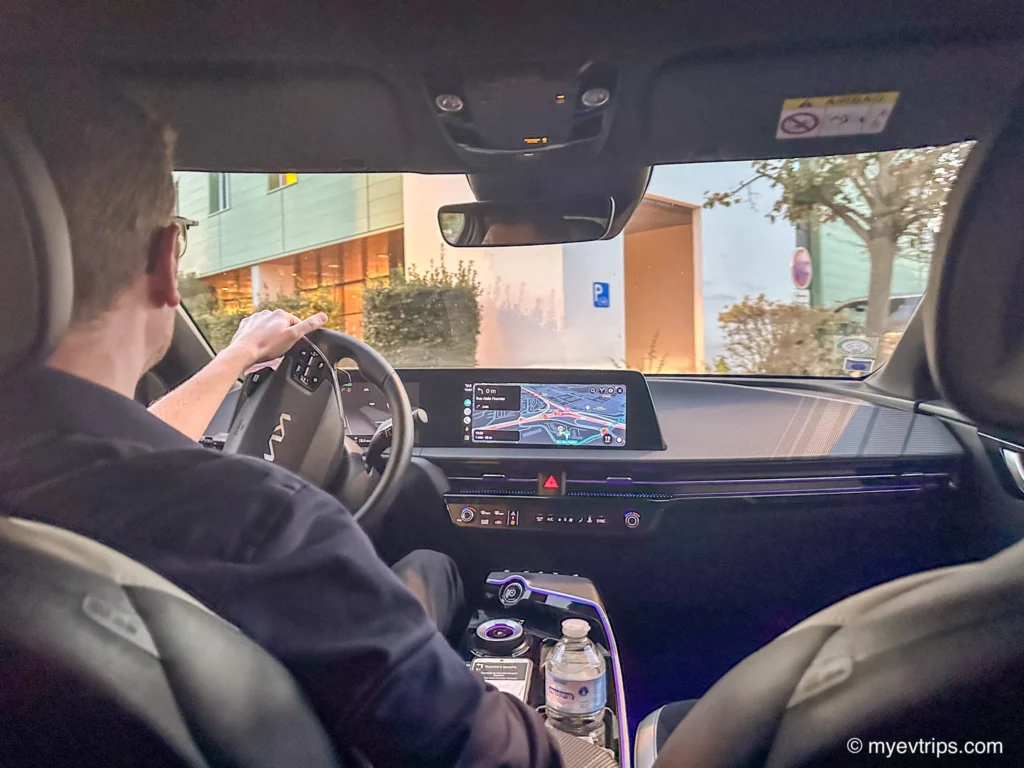
Despite my limited vocabulary, we managed a conversation about the increasing number of EVs on the road in France and how the country’s charging infrastructure is improving.
Arriving in Toulouse, I was ready for a well-earned celebration. I found a cozy spot to have a fitting final meal—duck confit, a classic dish of the region.

With that, my European EV road trip officially came to an end—an unforgettable journey proving that long-distance EV travel across Europe is not just possible, but an absolute joy.
A Great European EV road trip
This European EV road trip was an incredible experience, but it wasn’t without challenges. Charging infrastructure varied by country, with France and Switzerland offering the best options and Spain lagging behind in reliability.
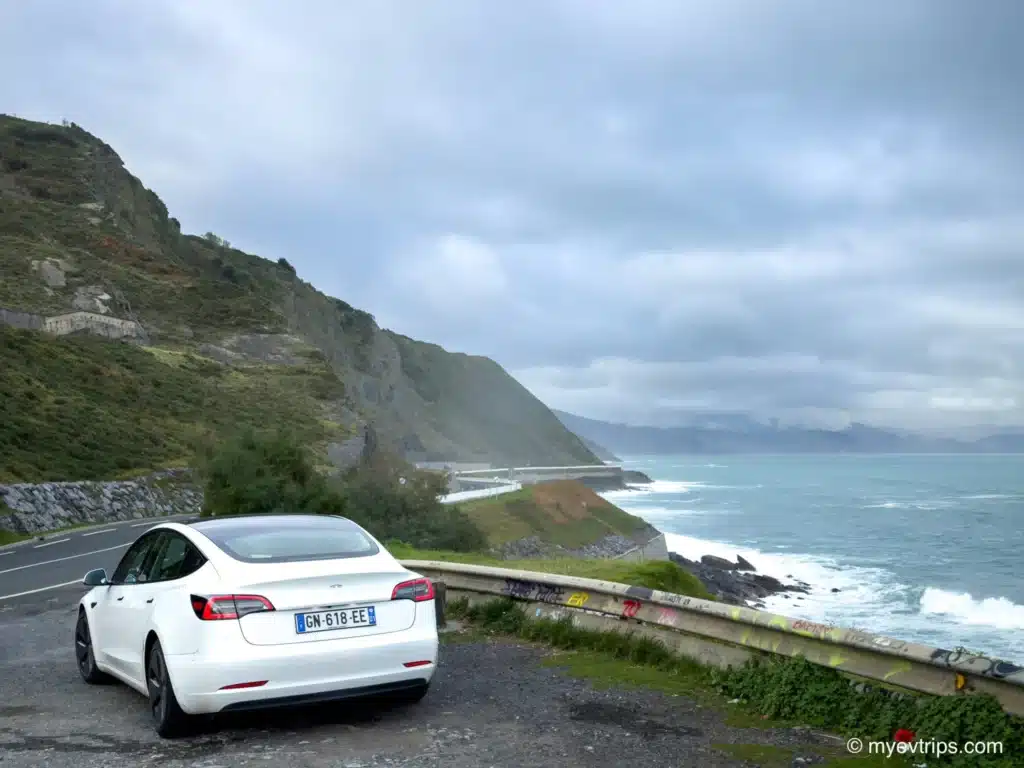
Planning hotel stays around charging remains a hurdle in Europe, but using public fast chargers worked well for the most part. Since electric car charging stations in Europe are never too far apart, range anxiety is minimal.
Would I do it again? Absolutely. Next time, though, I might opt for a Volkswagen ID. Buzz or Renault Megane E-Tech to experience a European EV not available in North America.
I’m now debating a trip through Norway and the Lofoten Islands—if you have any recommendations, let me know in the comments!
Distance: 3,598 km
Energy Used: 509 kWH
Charge Cost: 180.77 €
FAQ: European EV road trip
How easy is it to find EV charging stations in Europe?
EV charging infrastructure in Europe is well-developed, especially in countries like France, Germany, and the Netherlands. Apps like Chargemap, PlugShare, and Ionity help locate charging points. However, rural areas and certain countries, like parts of Eastern Europe, may have fewer stations.
Do I need multiple charging cards or apps when driving through Europe?
Yes, as each country has different providers. While networks like Ionity, Tesla Superchargers, and Fastned cover multiple countries, you may also need country-specific providers like Enel X in Italy or Iberdrola in Spain. A roaming card like Shell Recharge, Plugsurfing, or ChargePoint can provide access to multiple networks without needing separate accounts.
How do I avoid range anxiety on a long European road trip?
Plan your route carefully using tools like A Better Route Planner (ABRP) or Google Maps with EV charging filters. Stick to highways with reliable charging infrastructure and always have a backup station in mind. In more remote areas, top up whenever possible, especially in countries with fewer chargers like the Balkans.
What’s the best way to plan an EV-friendly route?
Use apps like A Better Route Planner (ABRP) to map out charging stops based on your car’s battery capacity and driving style. Plan for extra charging time in case of station unavailability and ensure your accommodations have charging options.
What’s the best way to charge overnight while traveling in Europe?
Many hotels, Airbnbs, and campsites offer EV charging, but it’s important to check in advance. Websites like Booking.com and Airbnb now allow filtering for EV-friendly stays. Also, look for public chargers near accommodations in cities, as street parking with charging points is common in places like Amsterdam, Paris, and Oslo.
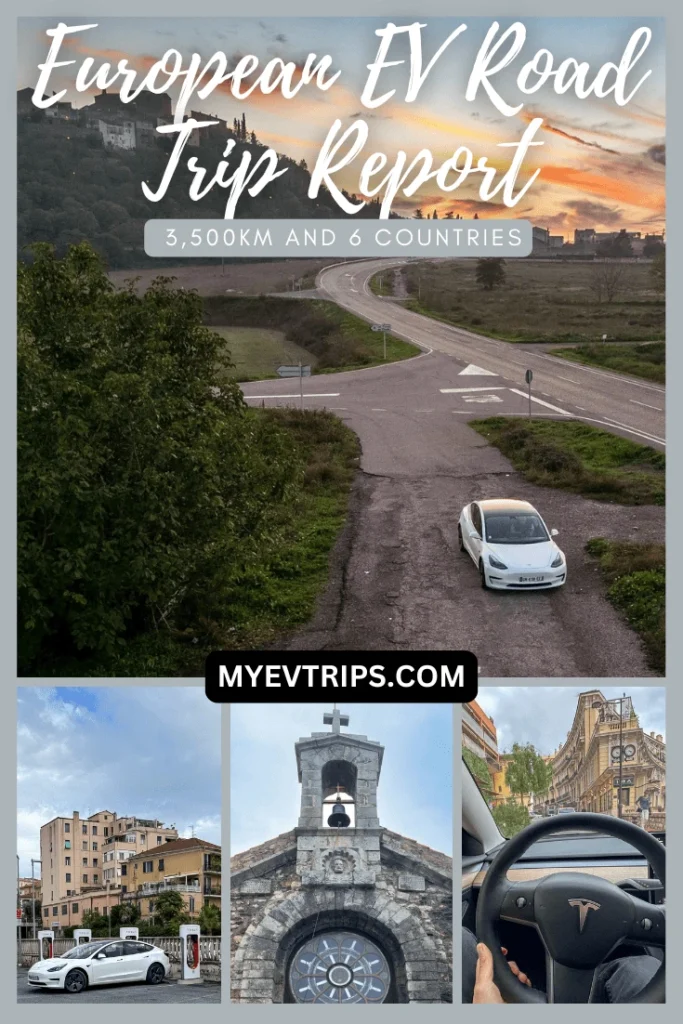




Pingback: Best San Sebastian Tapas Tour: Must-Try Pintxos & Bars 2025